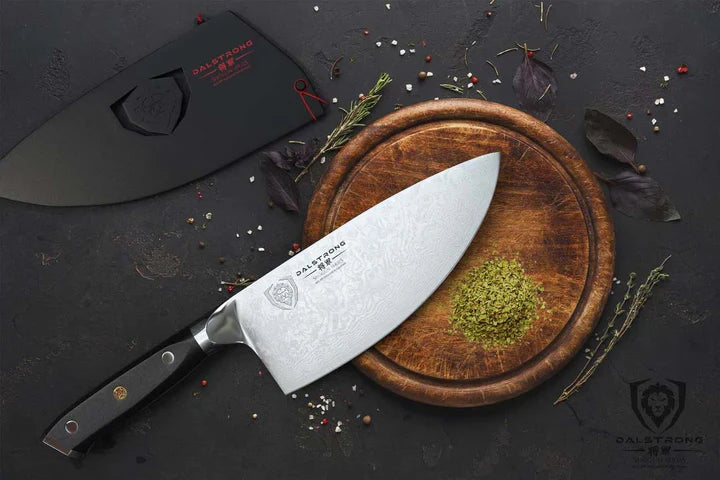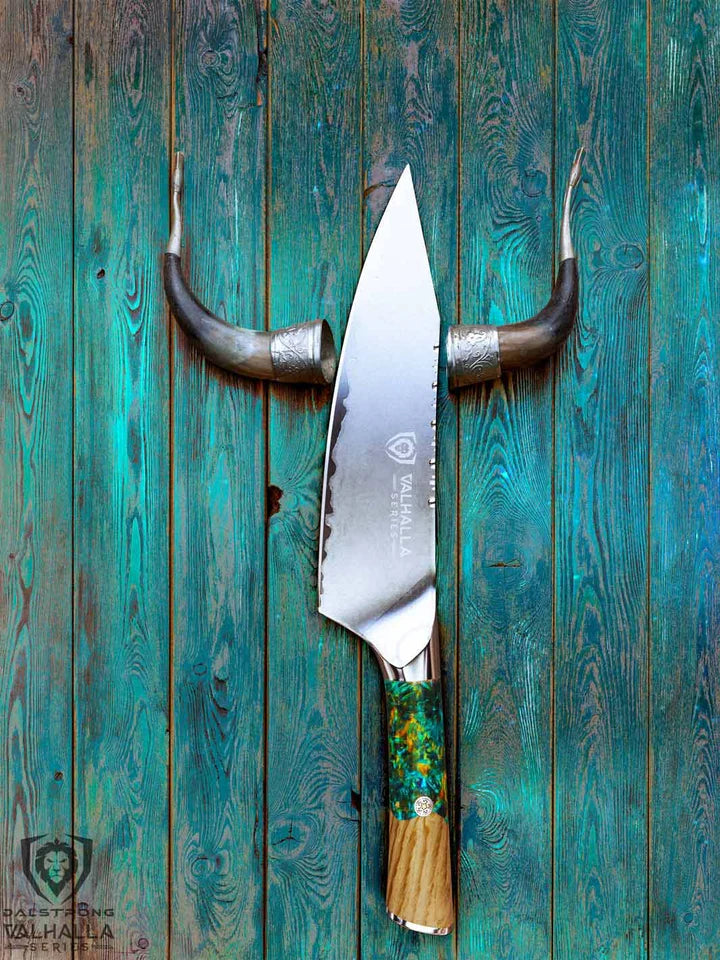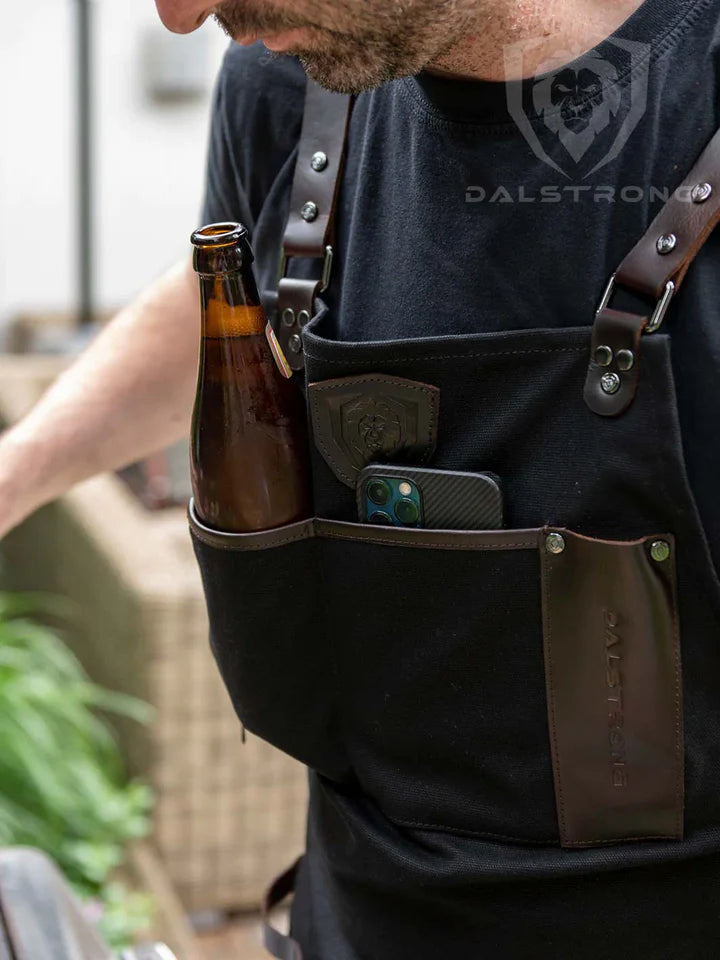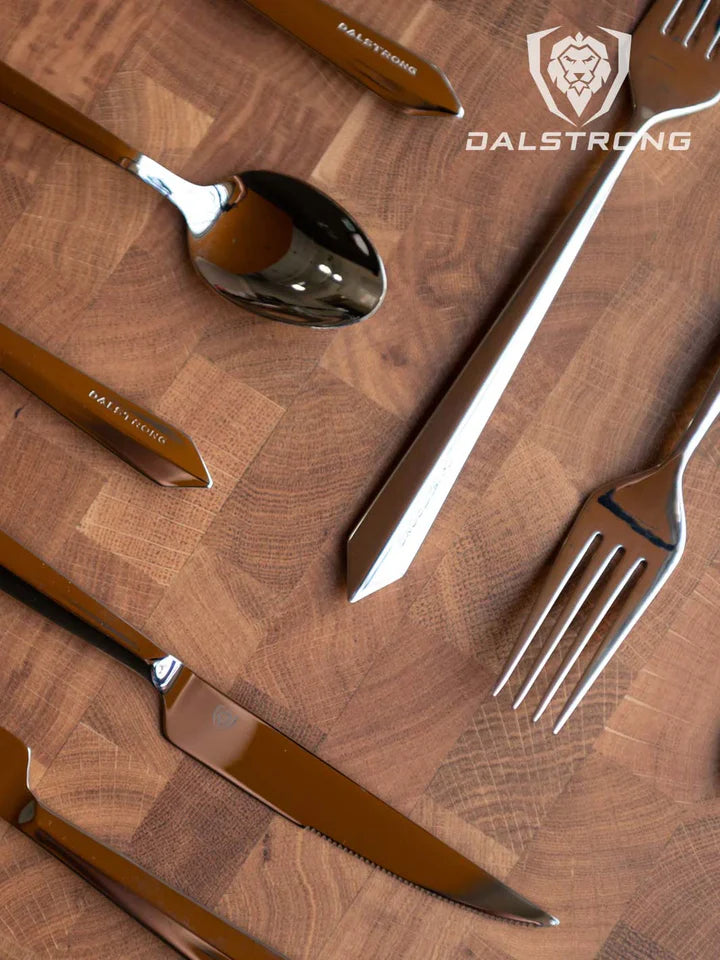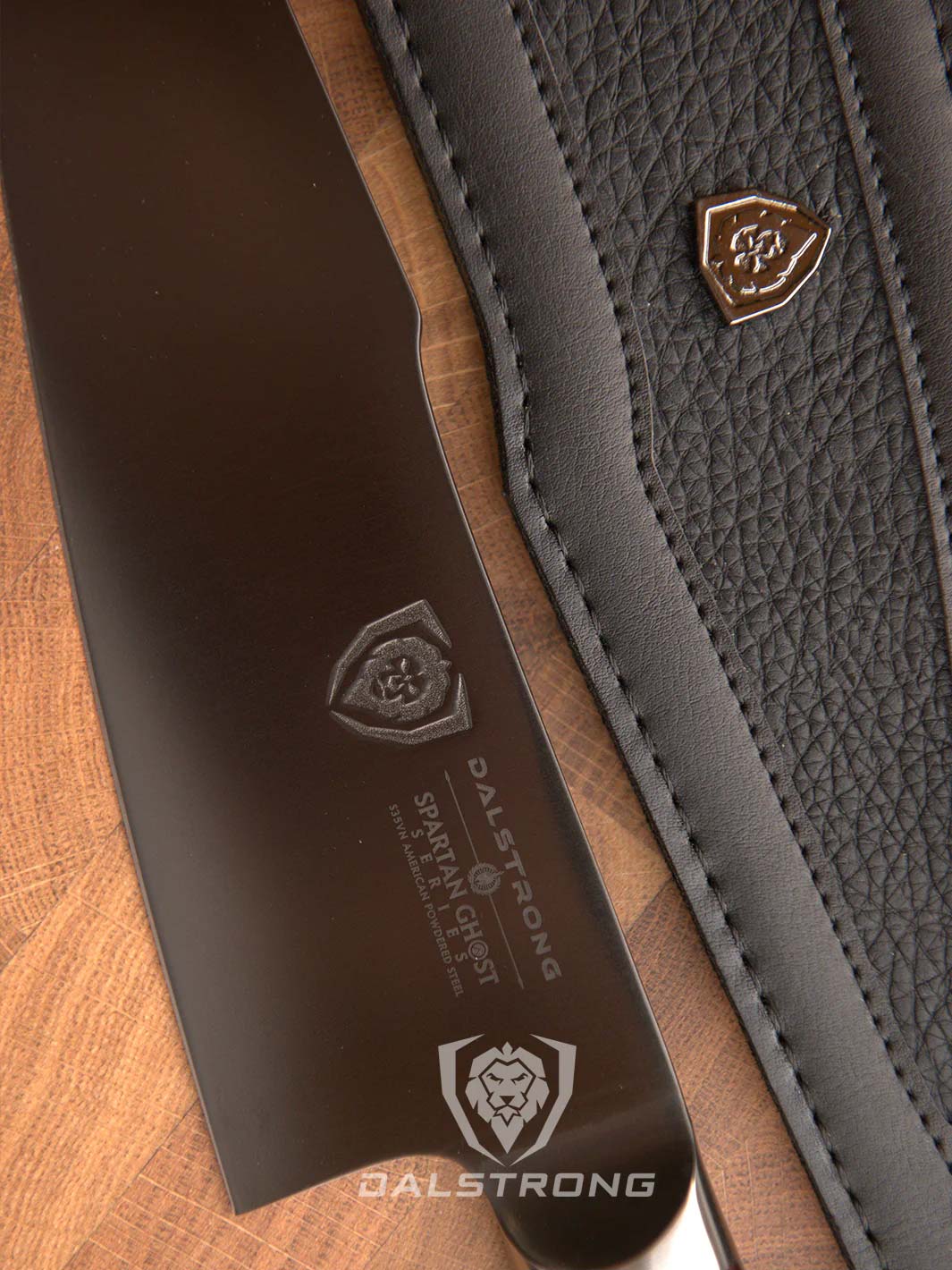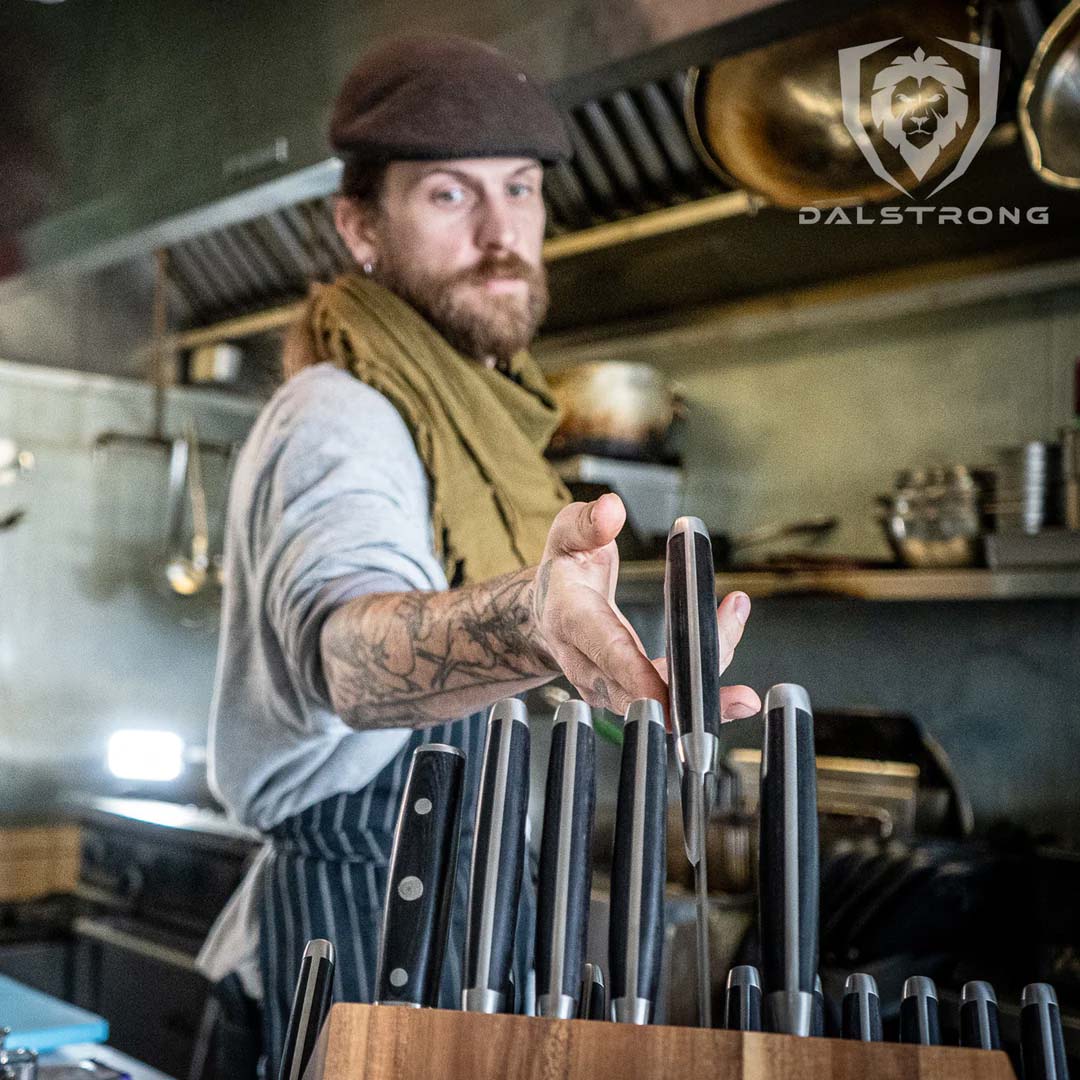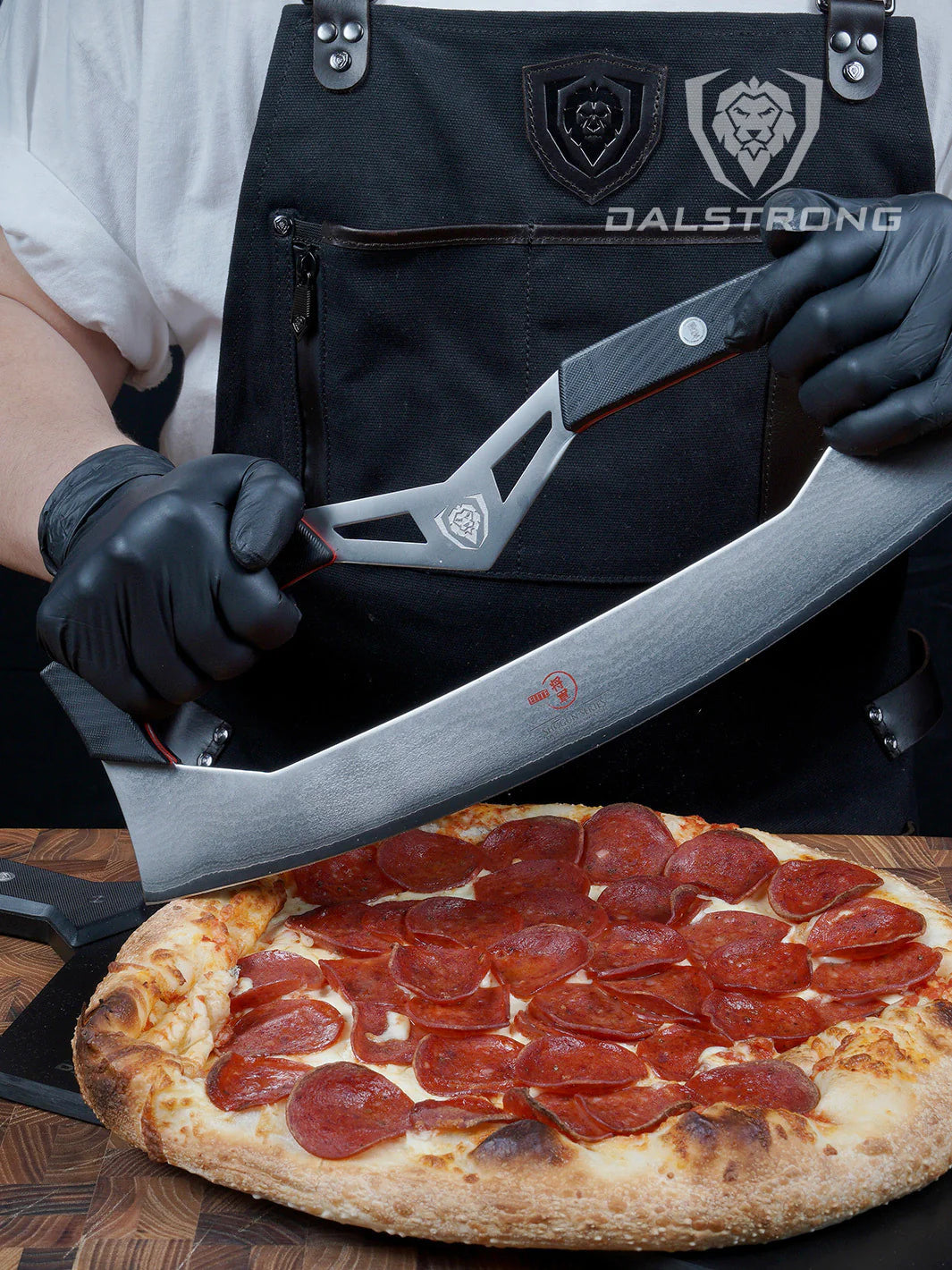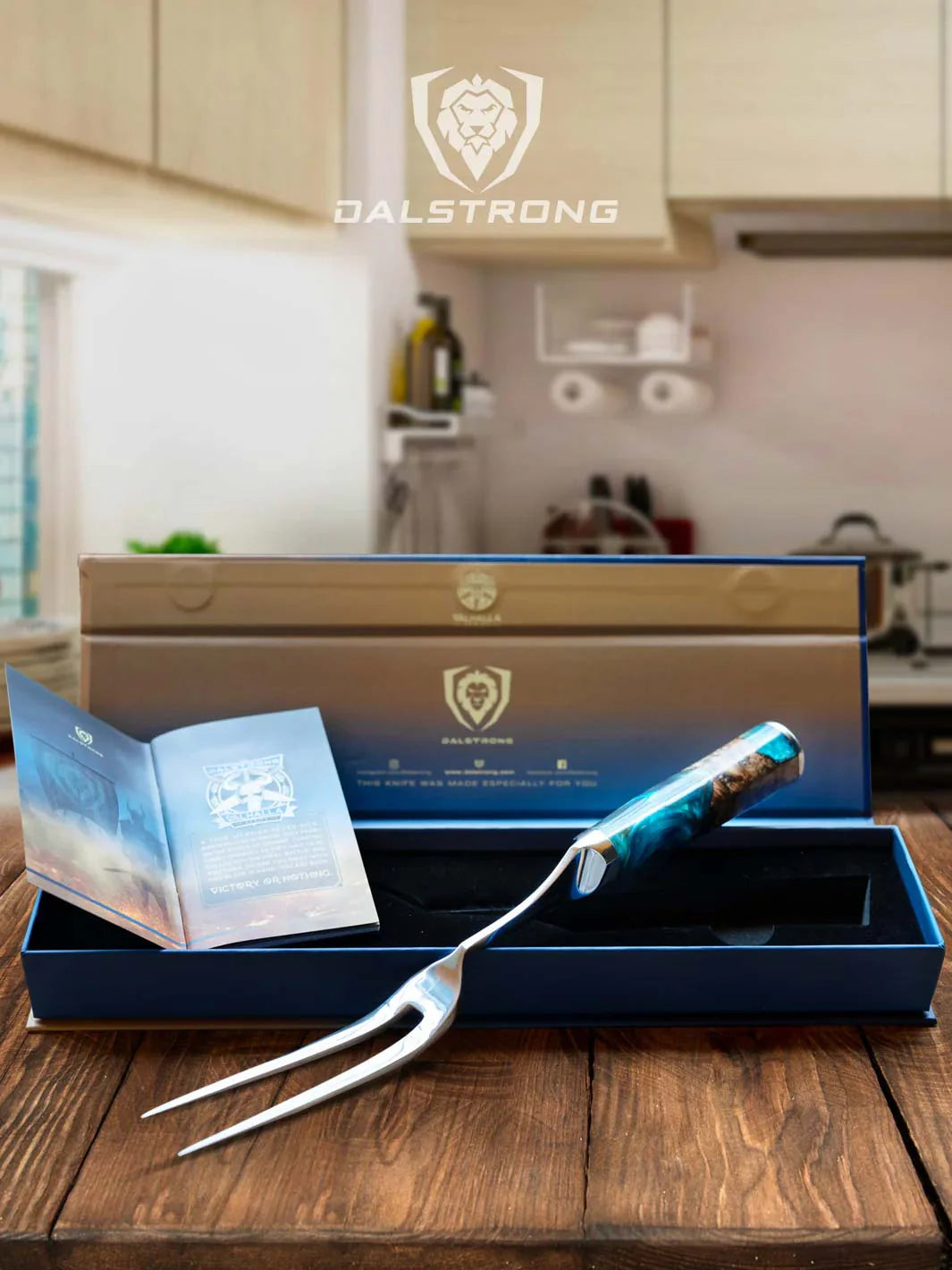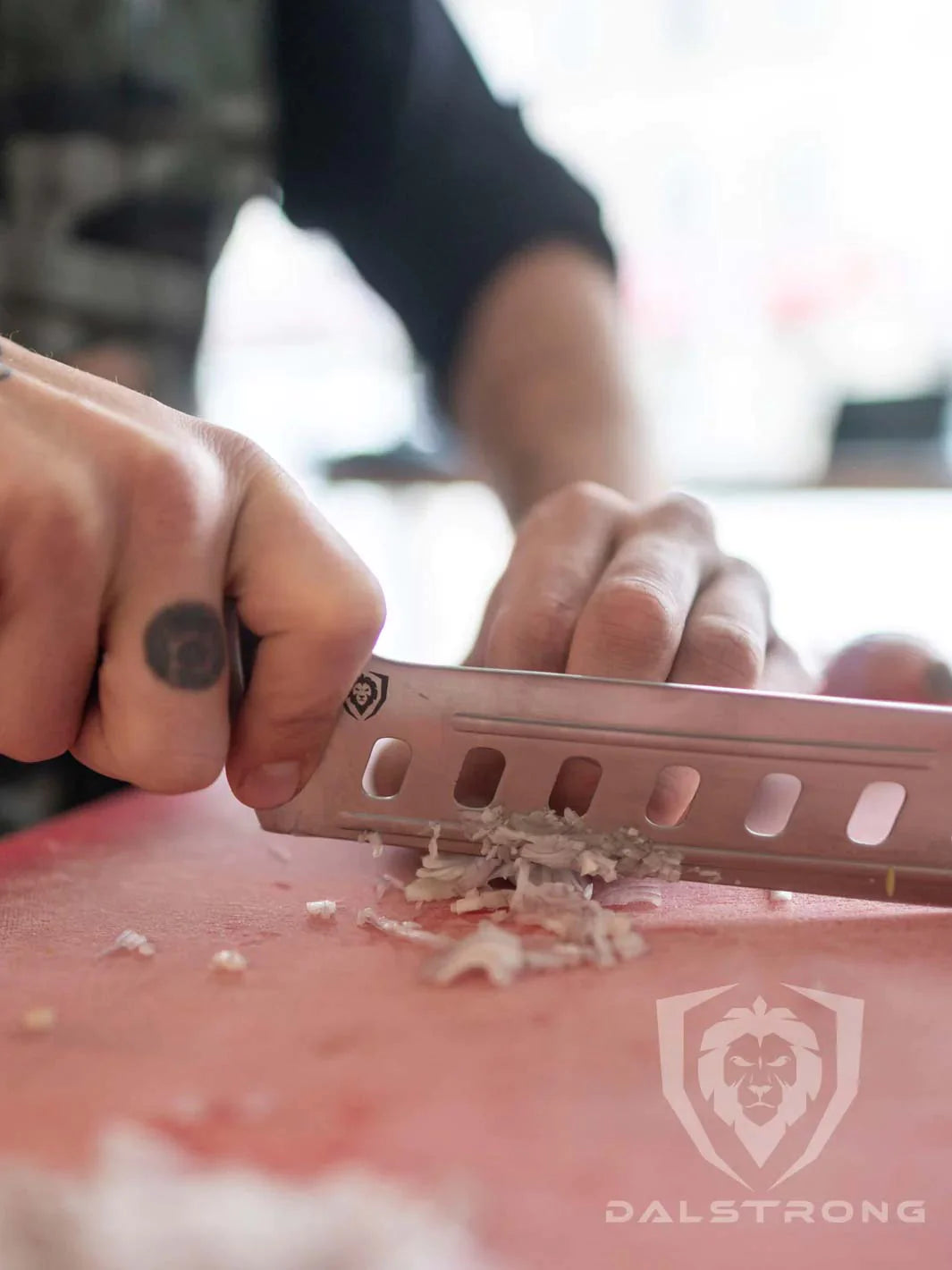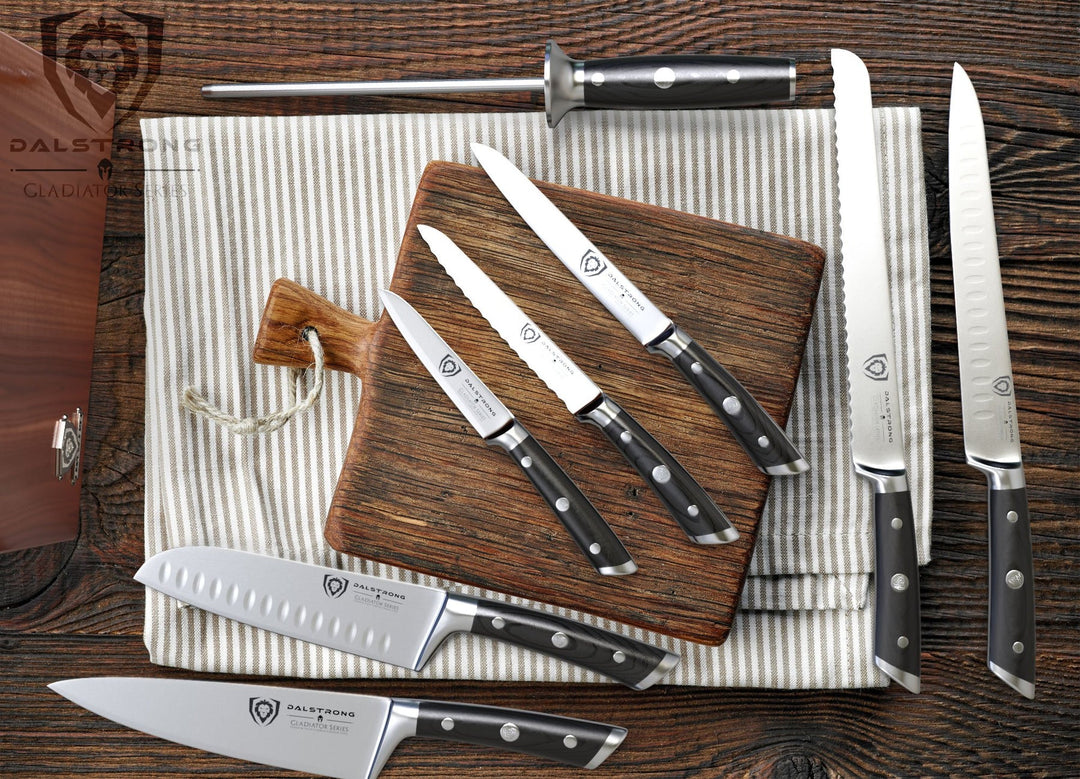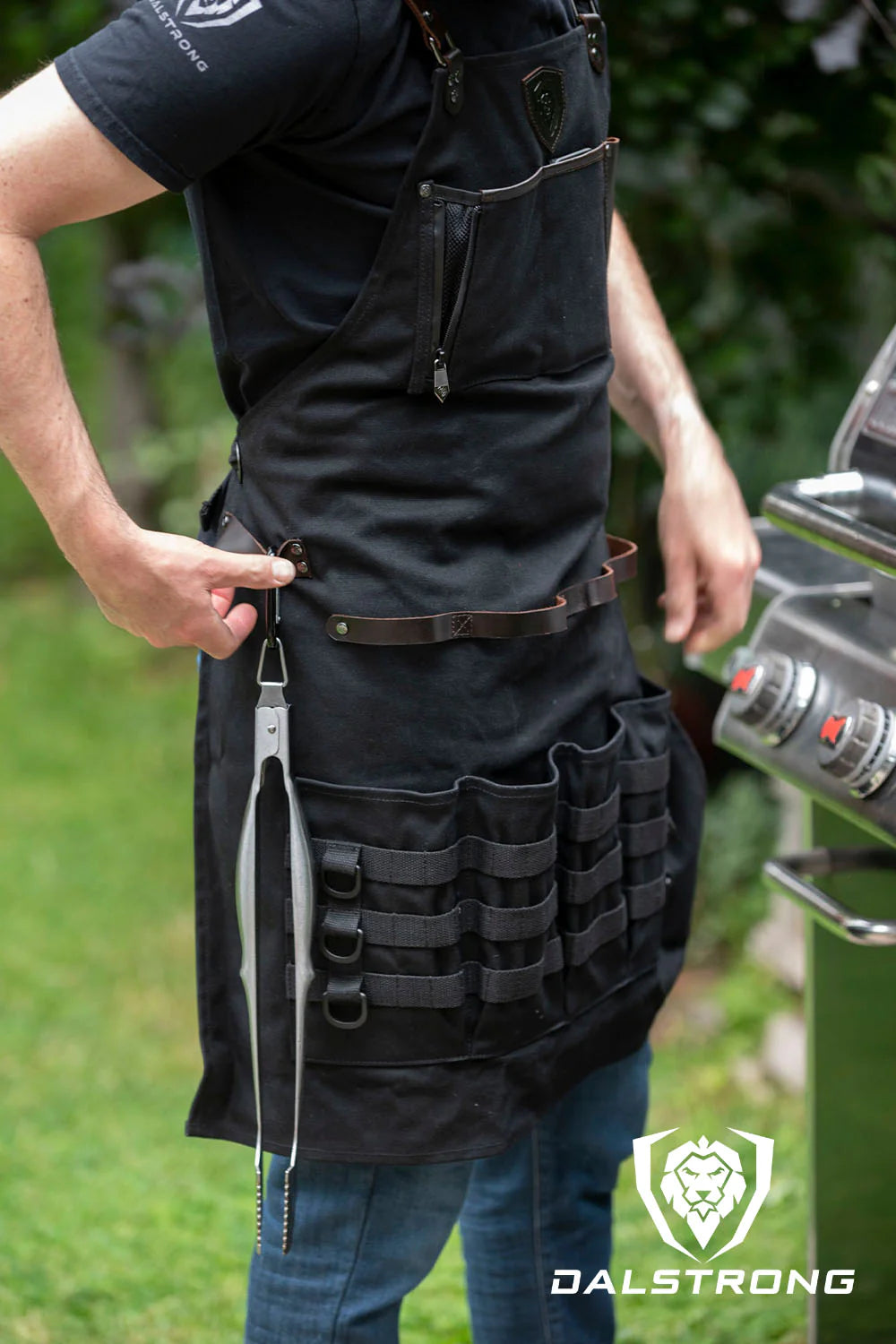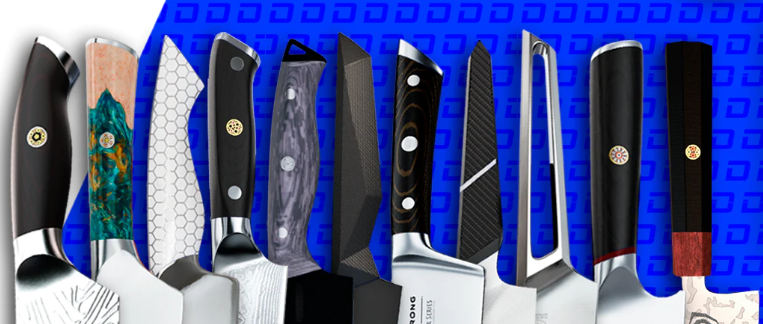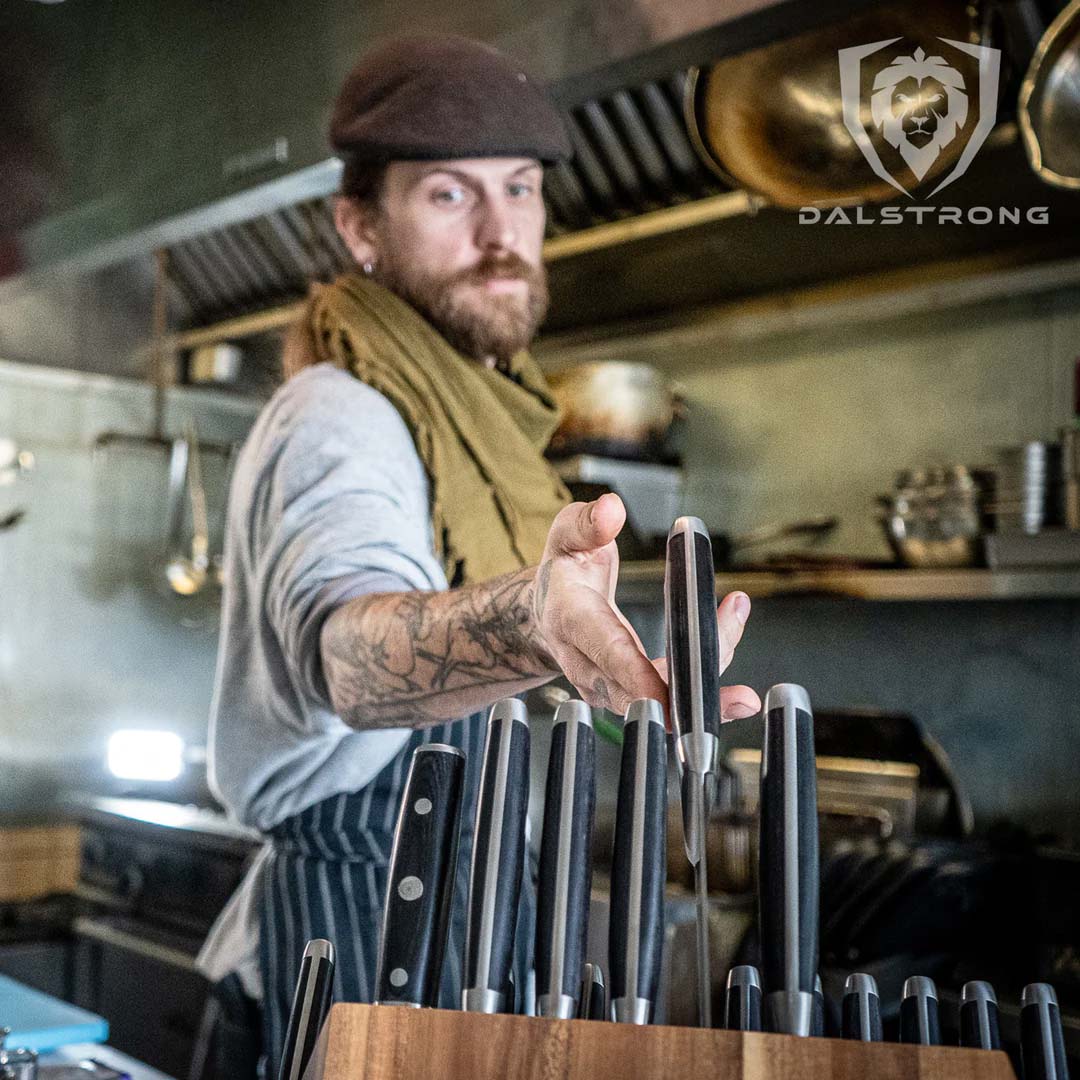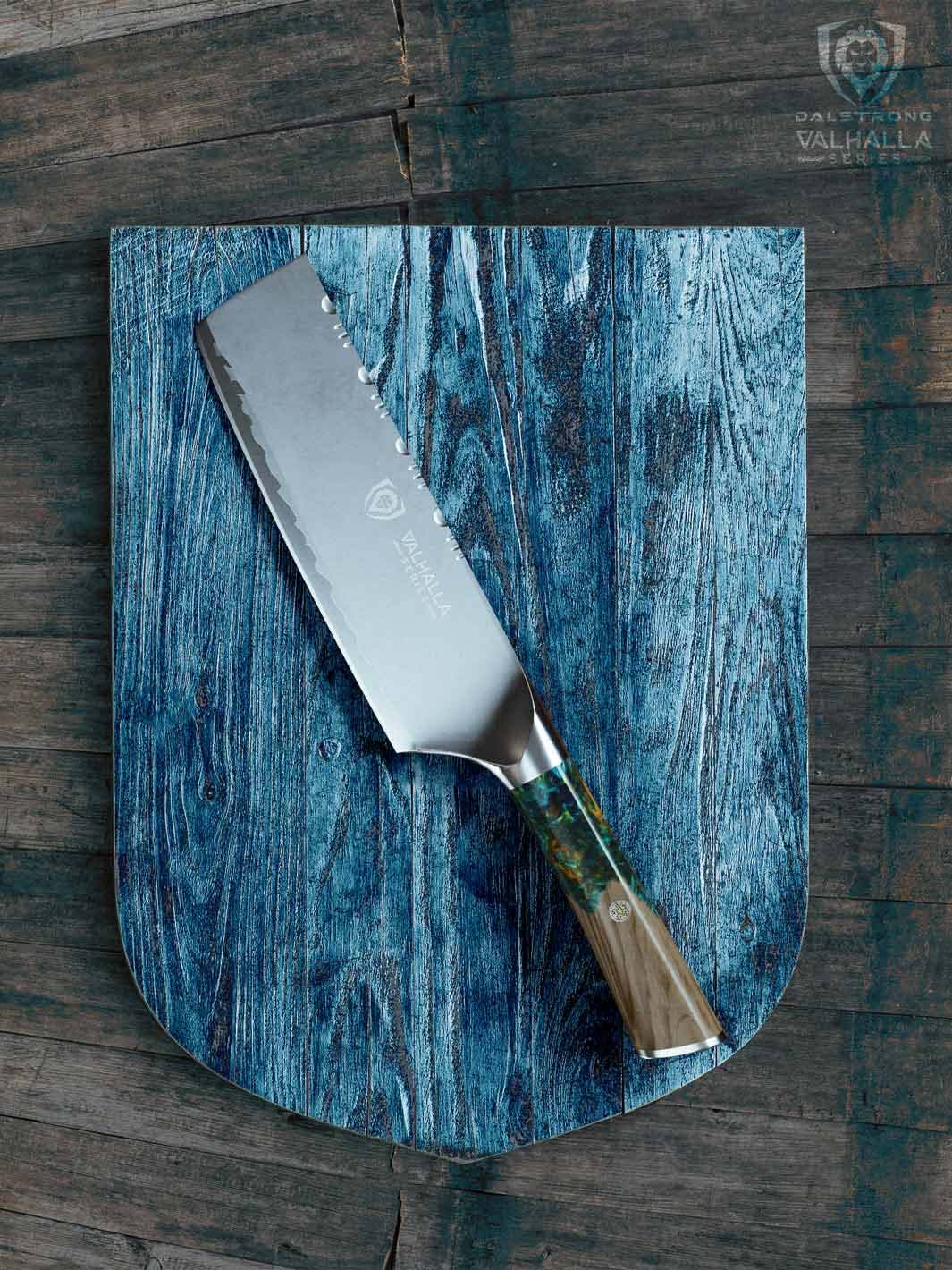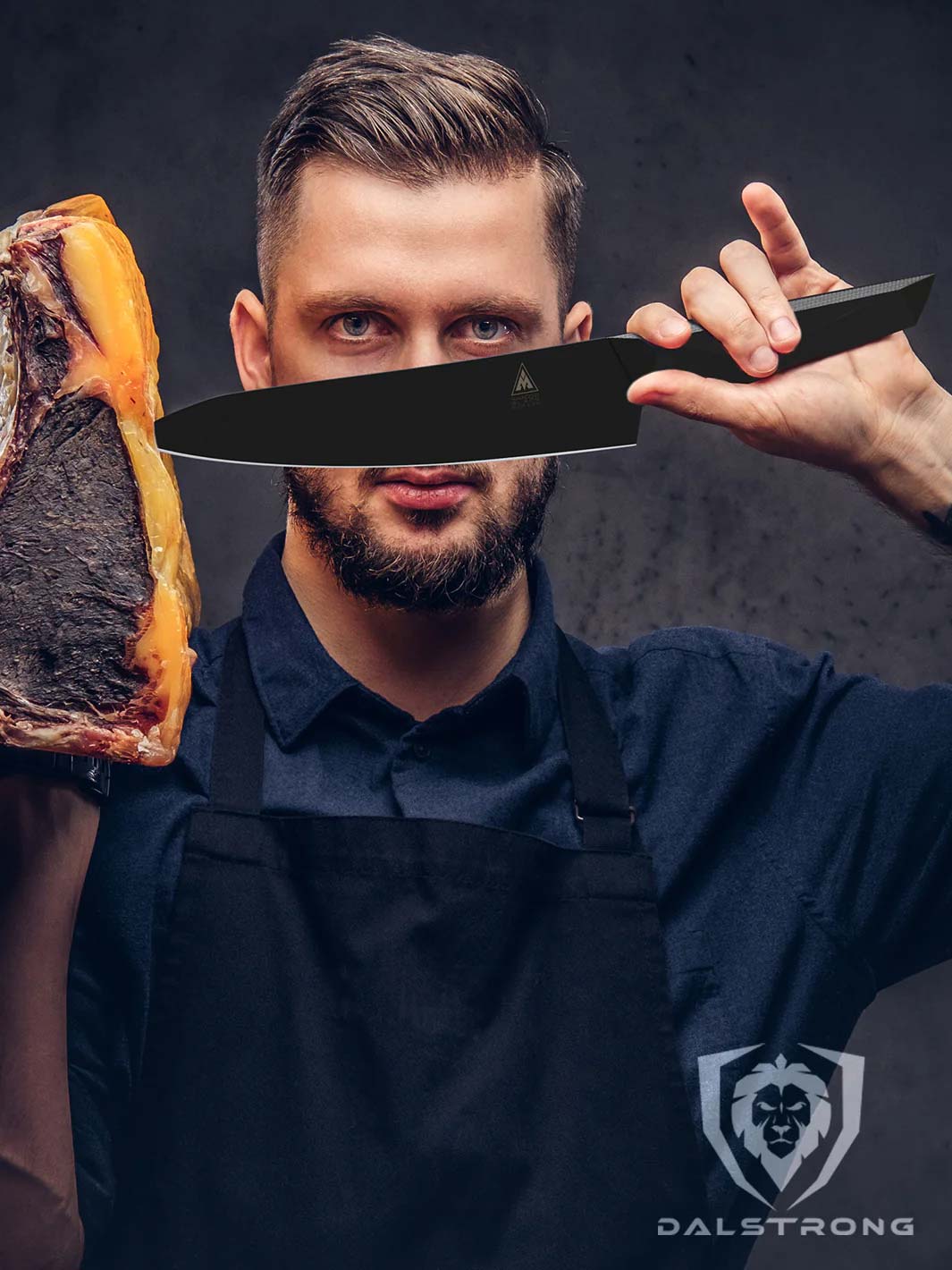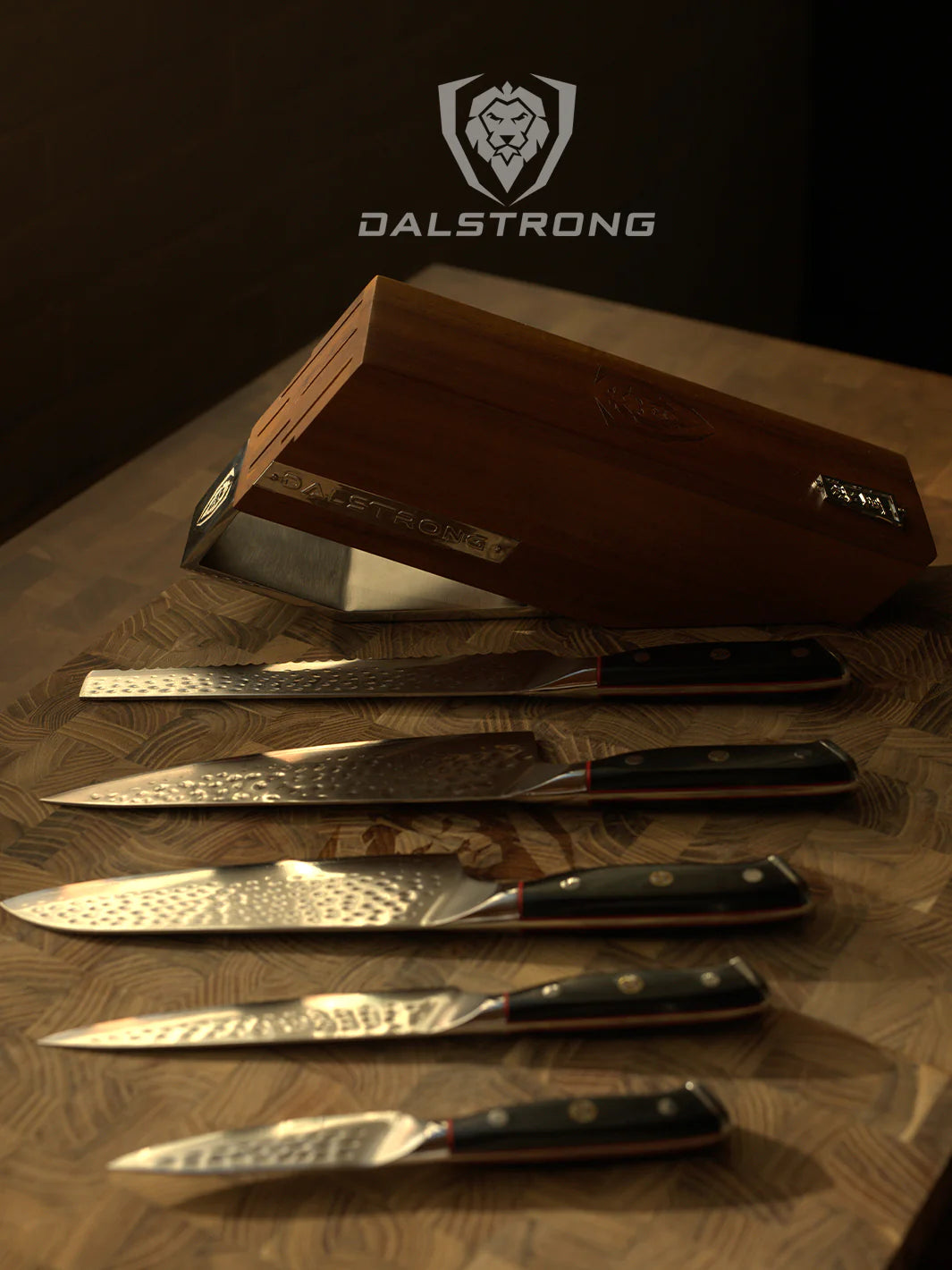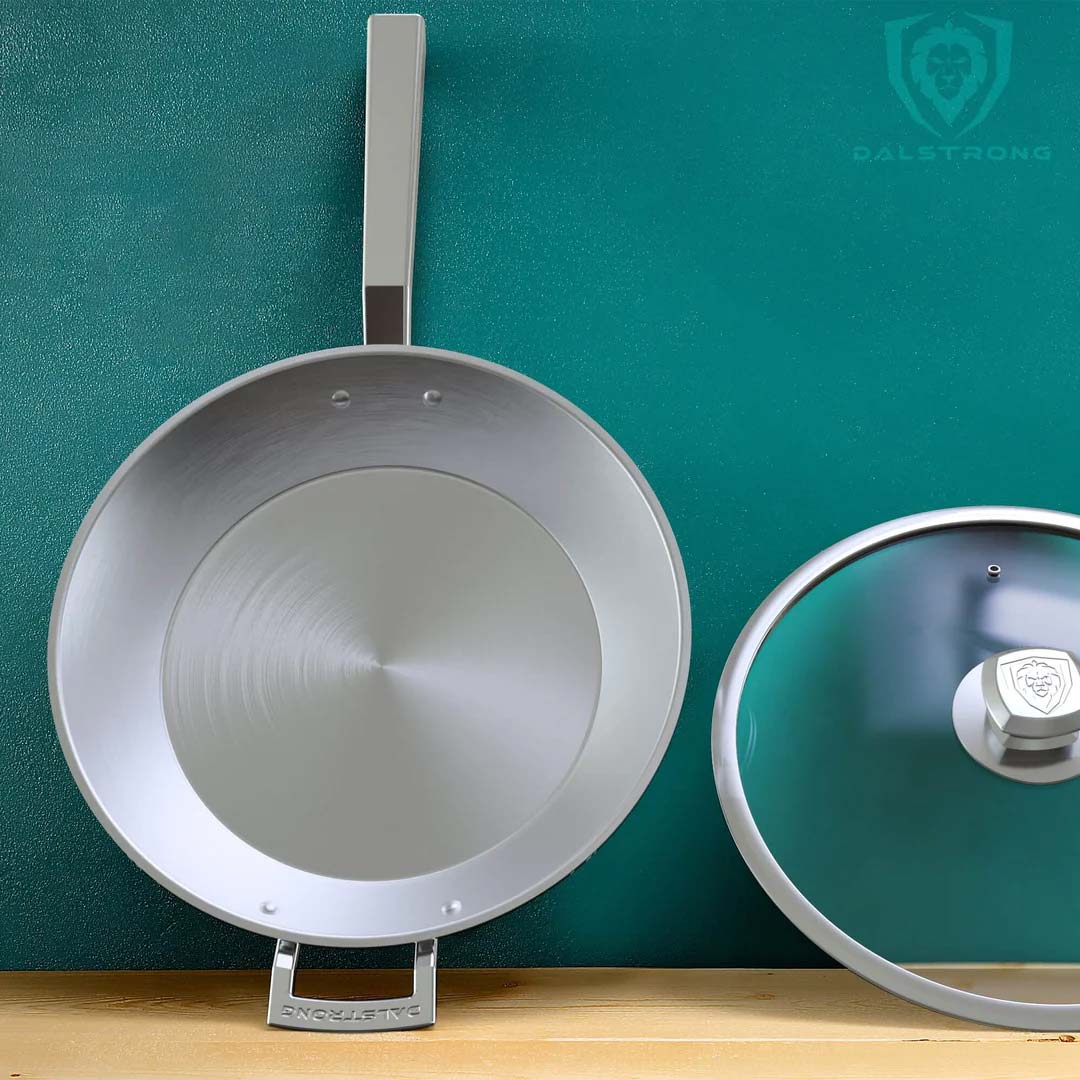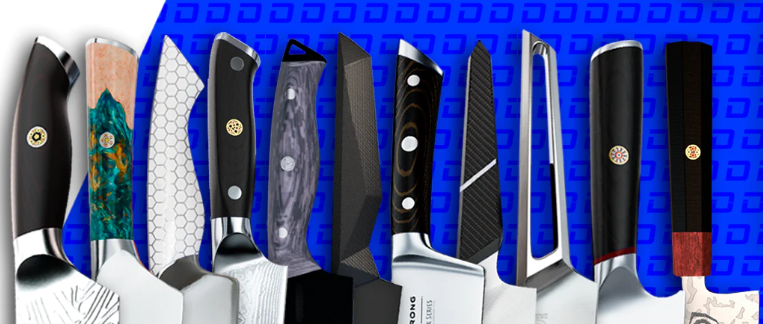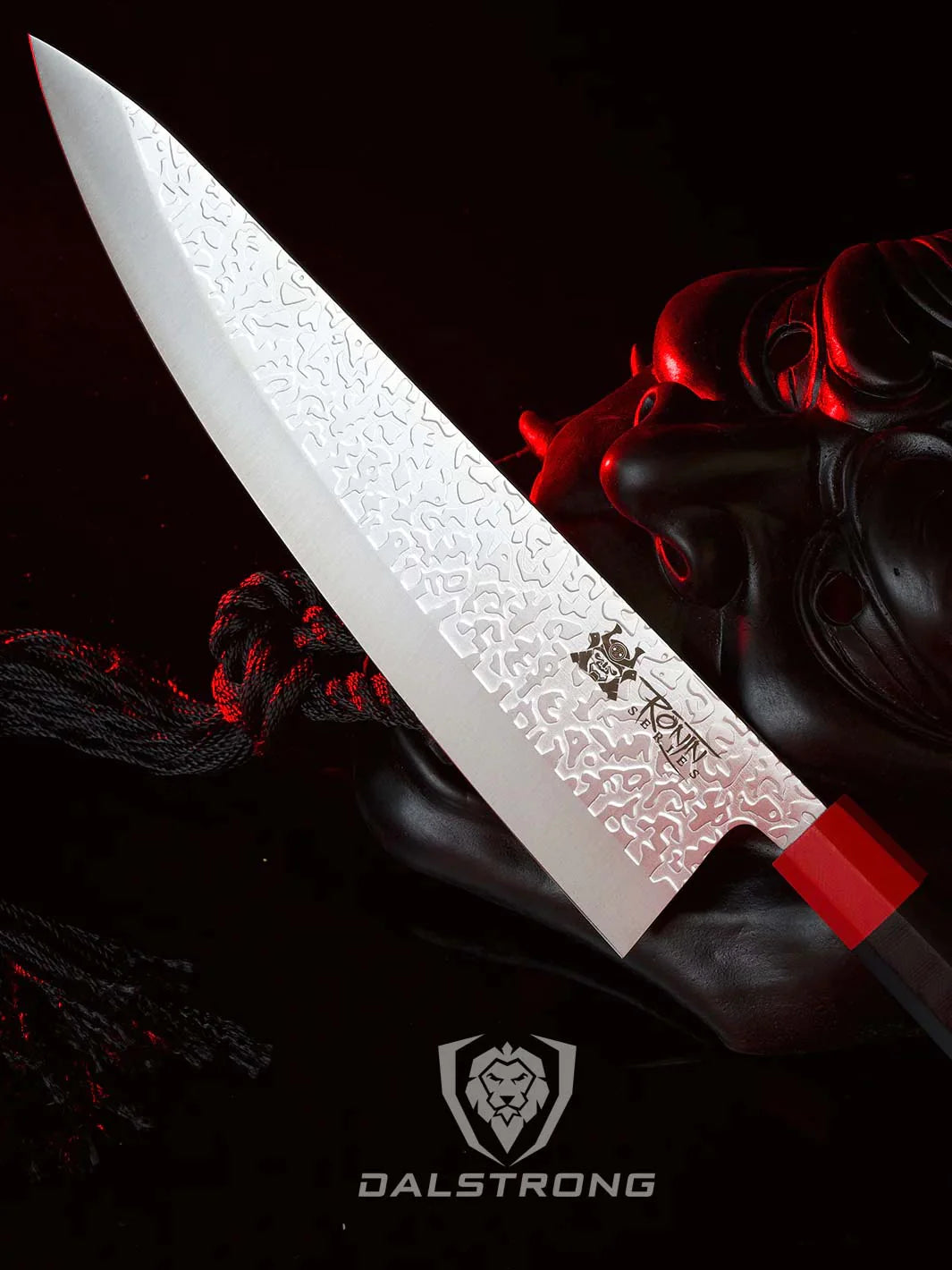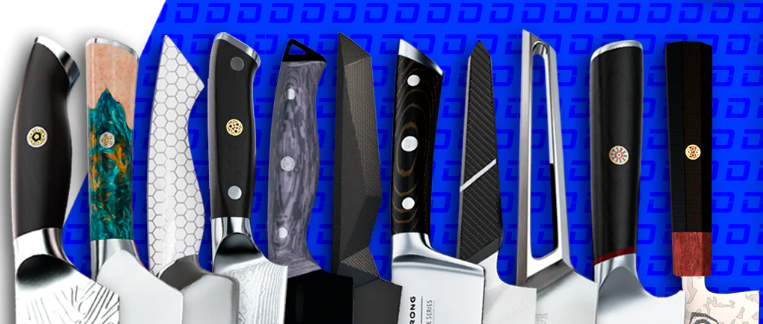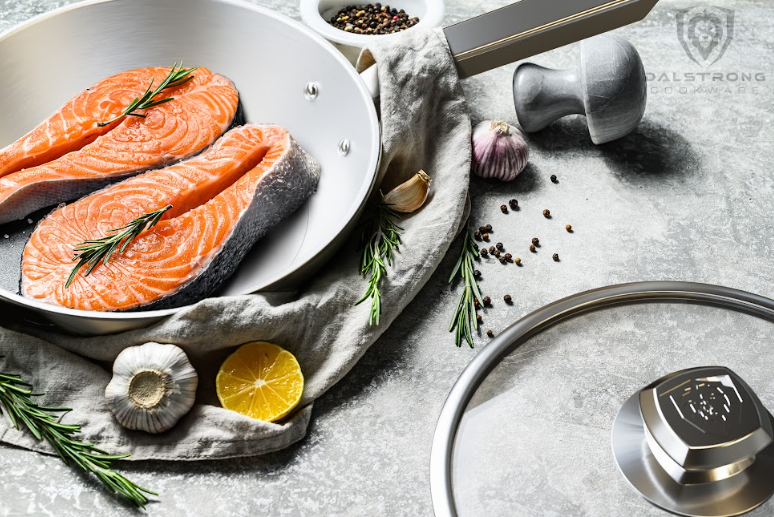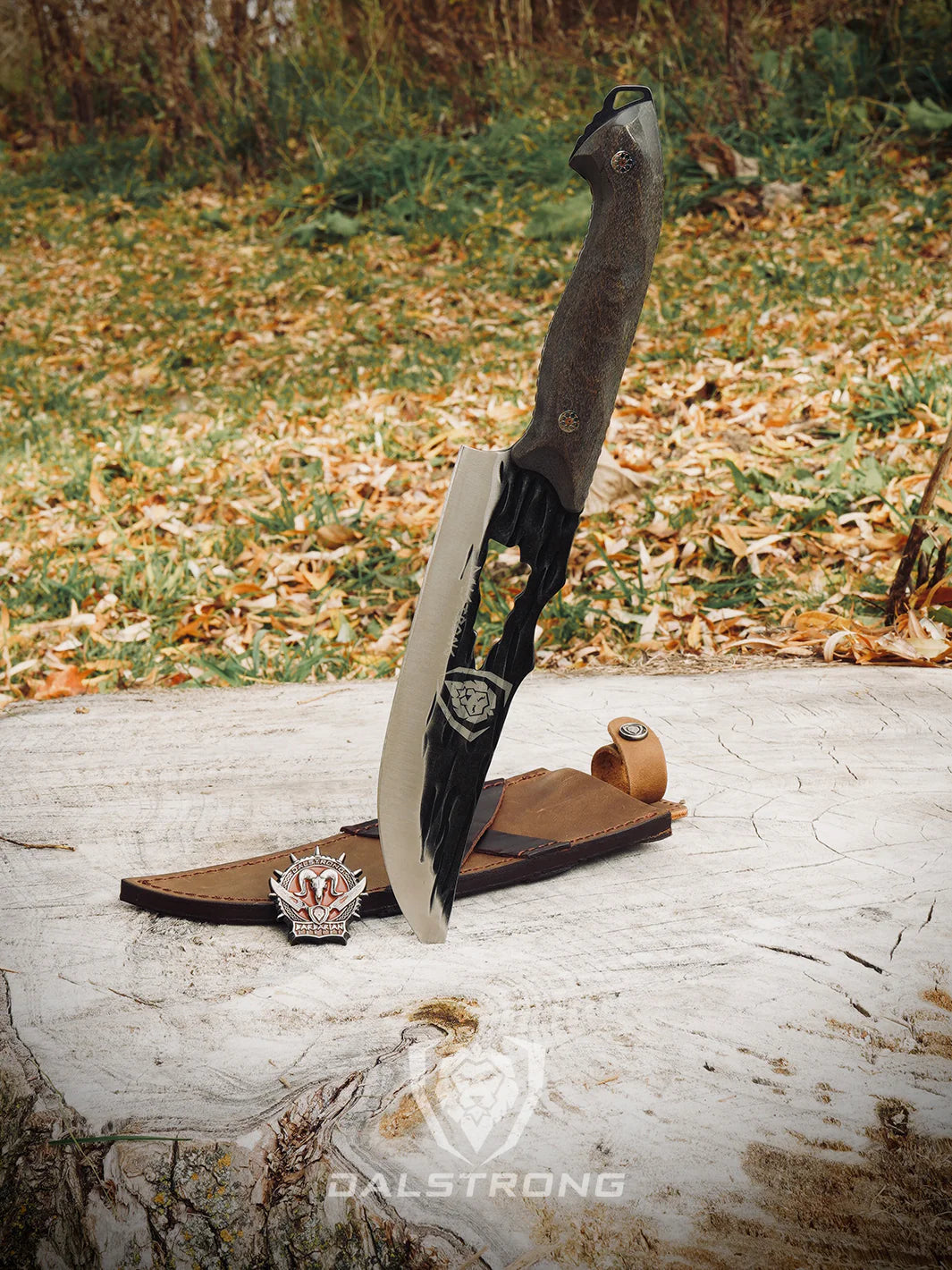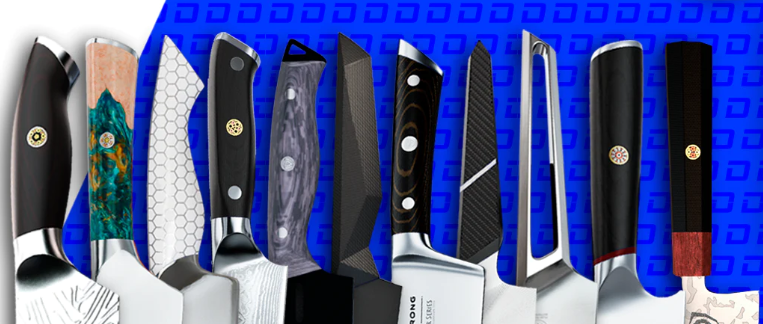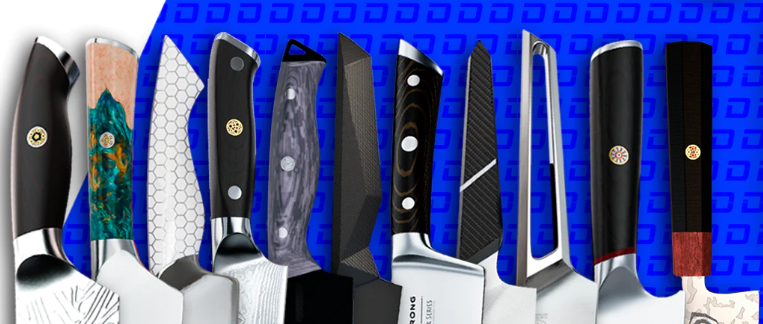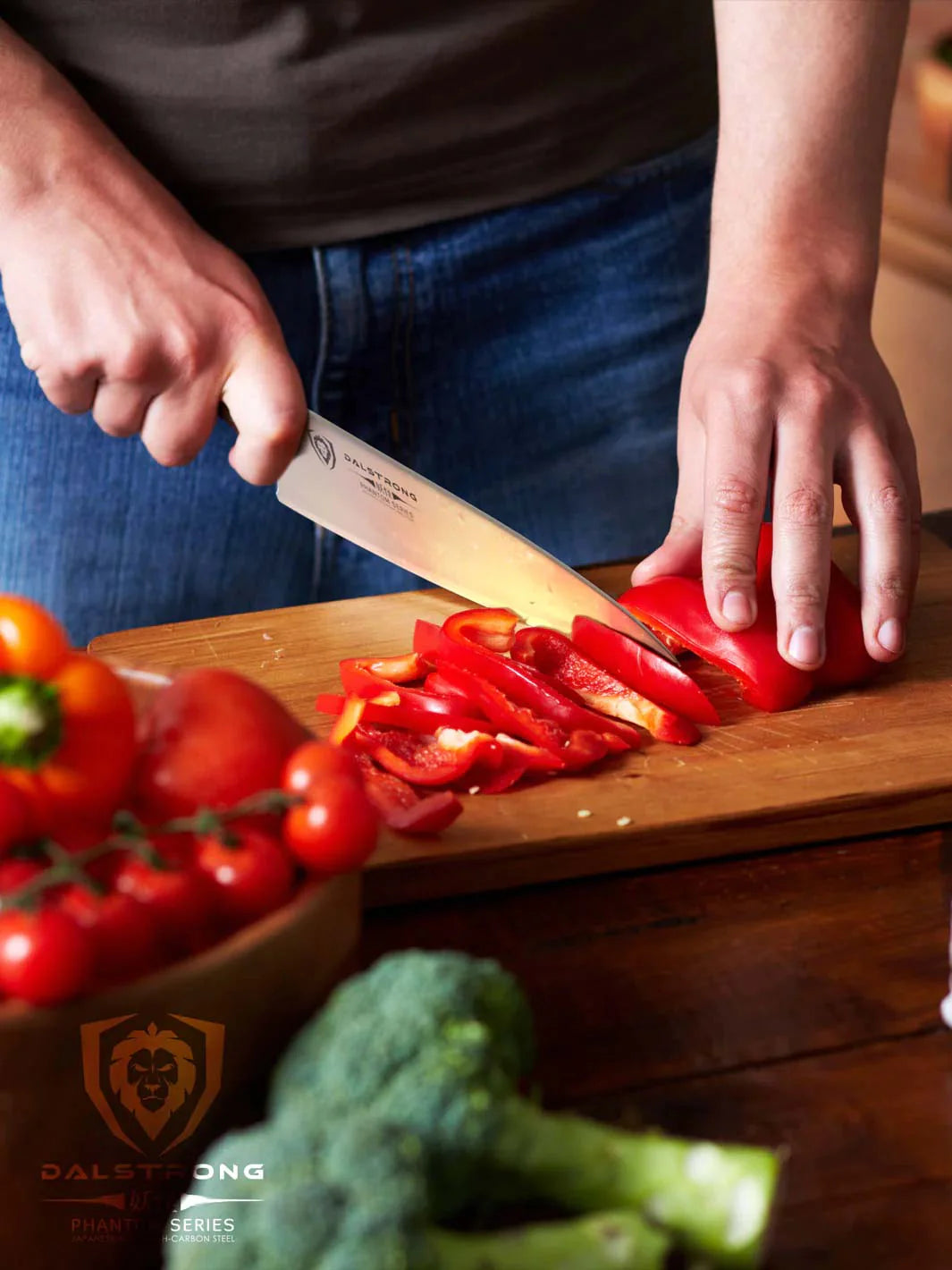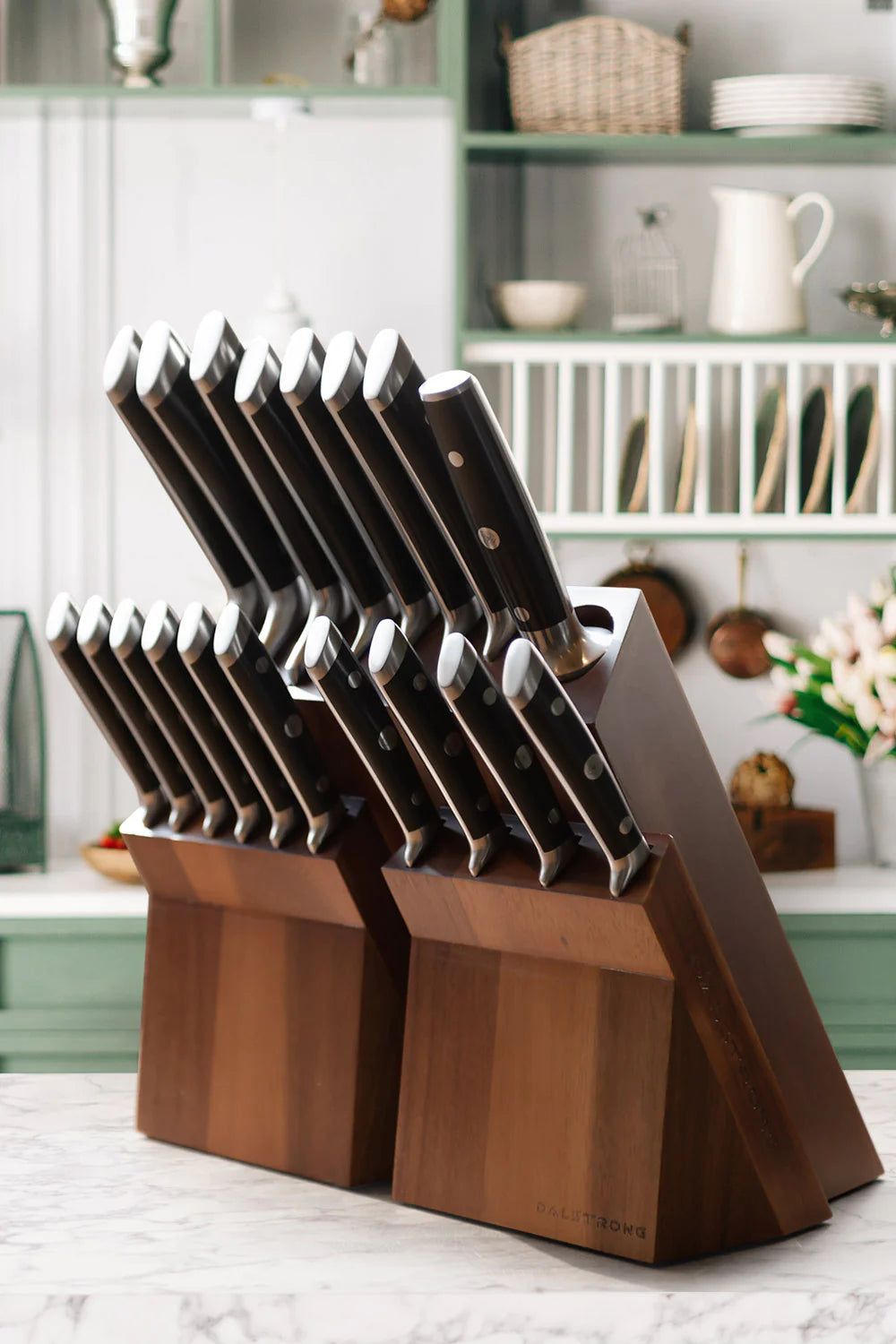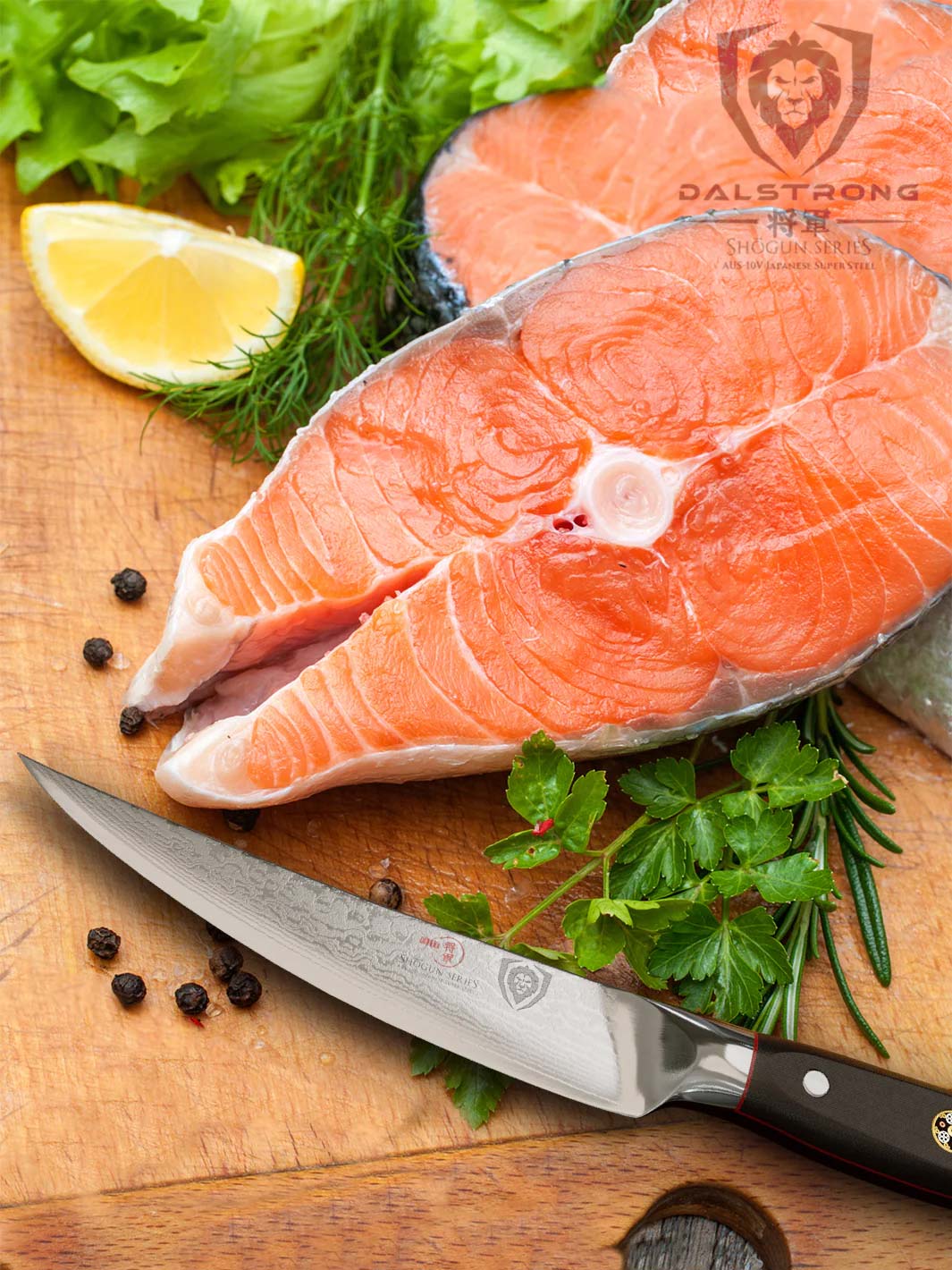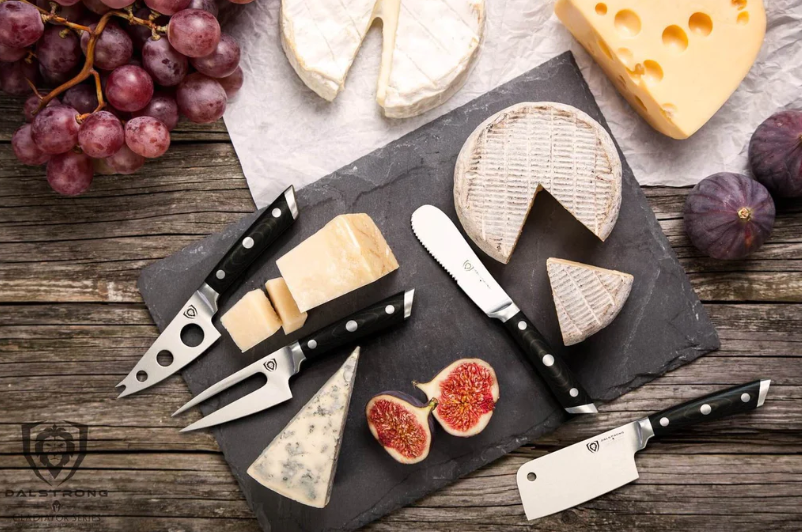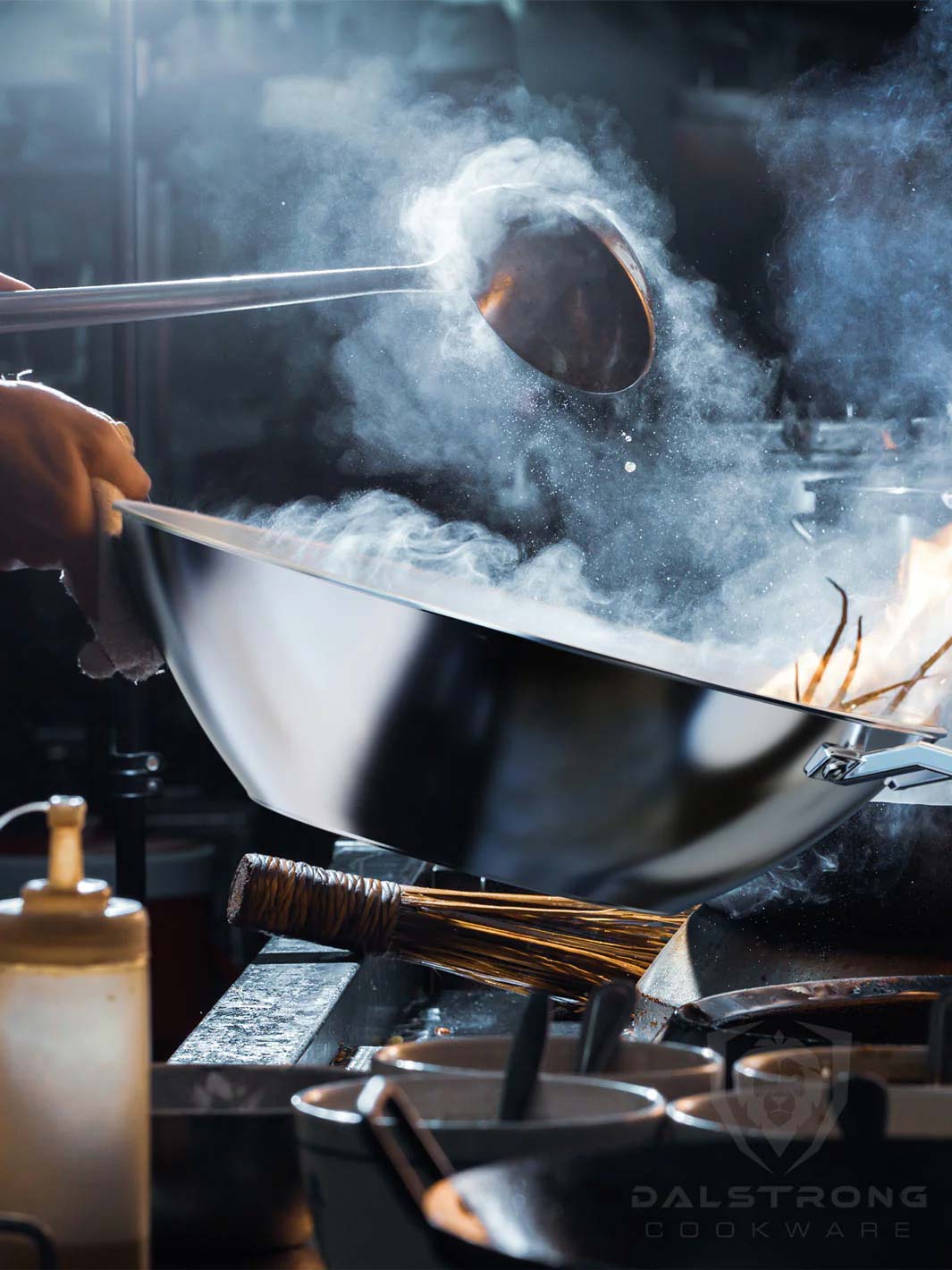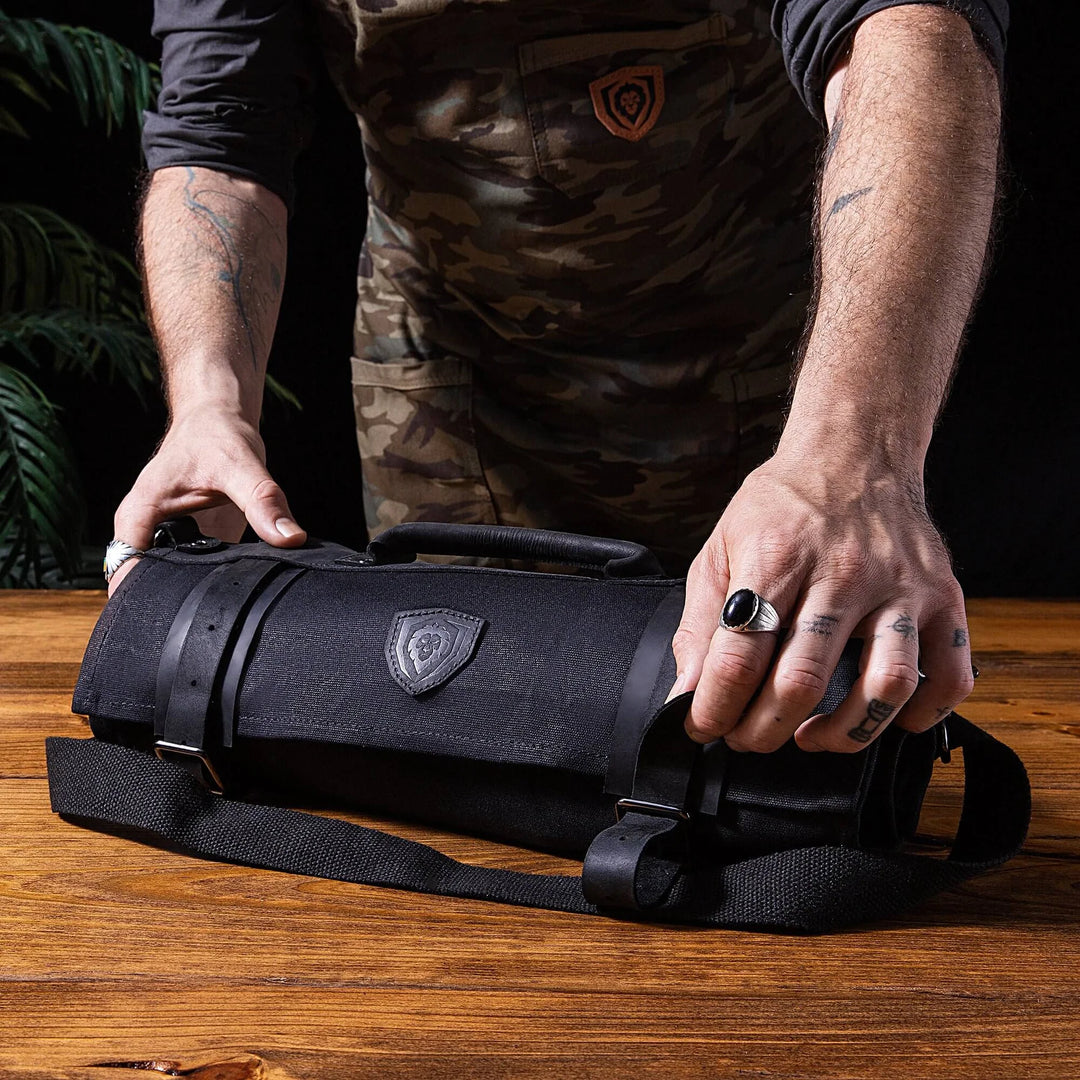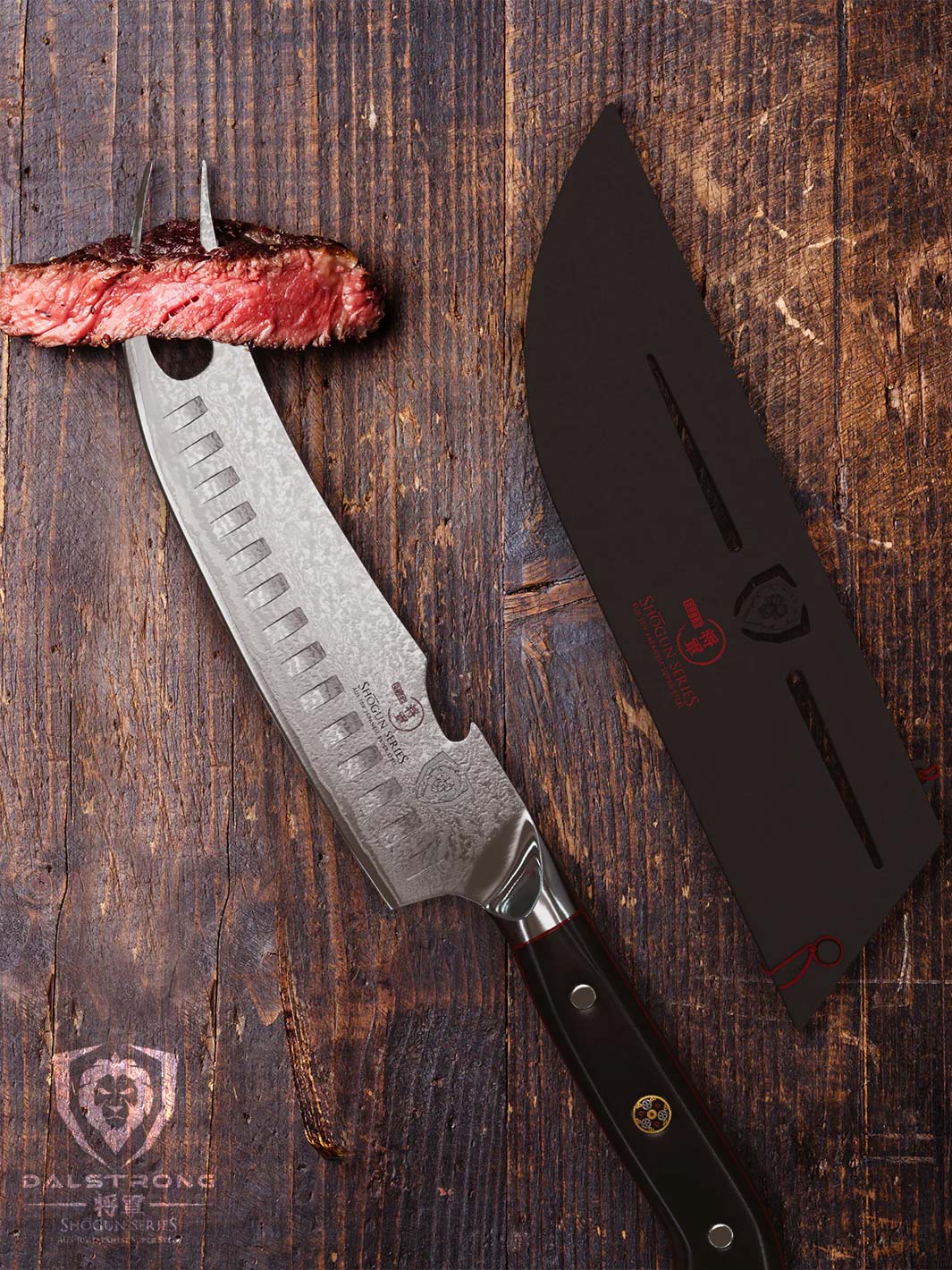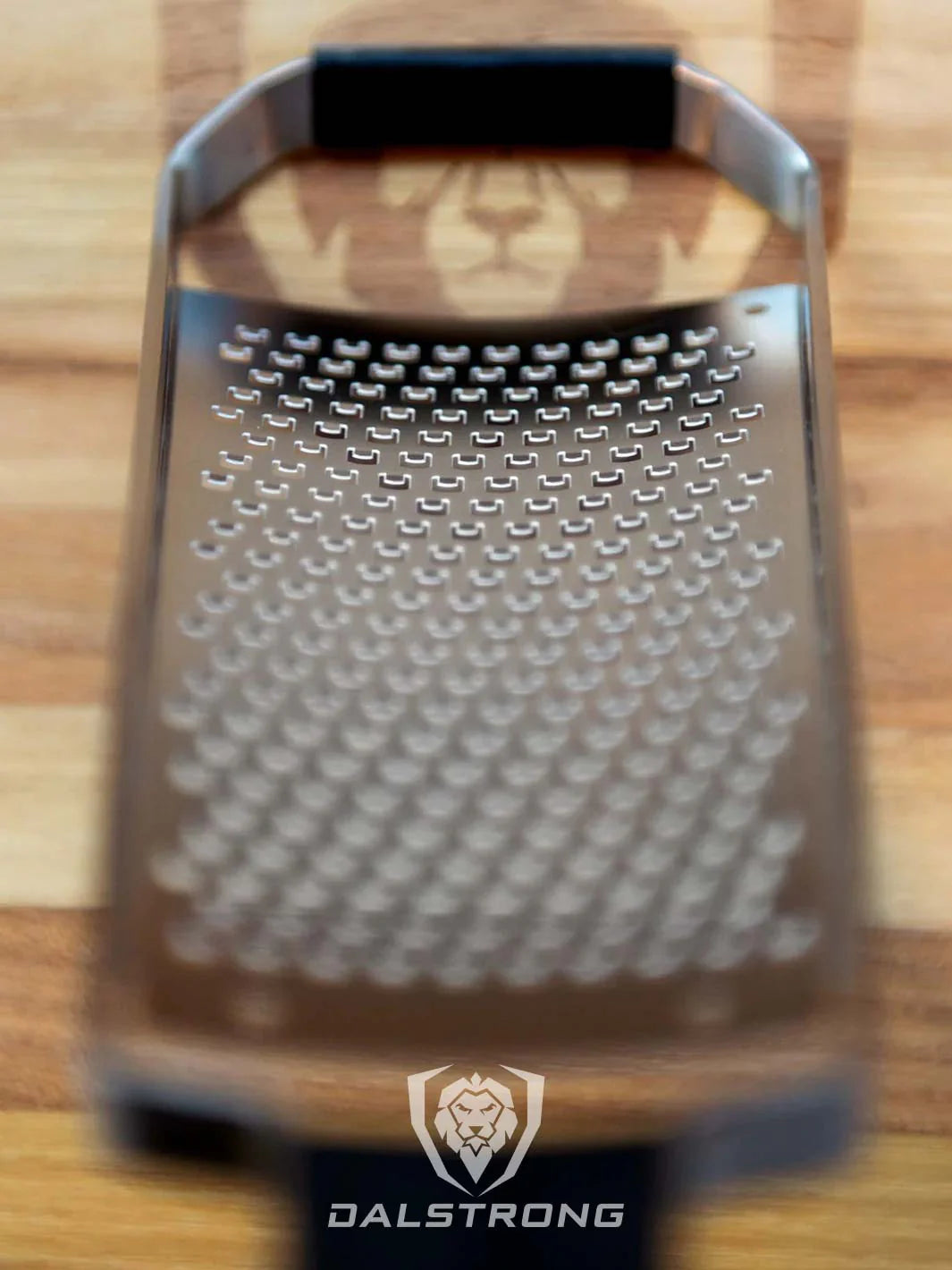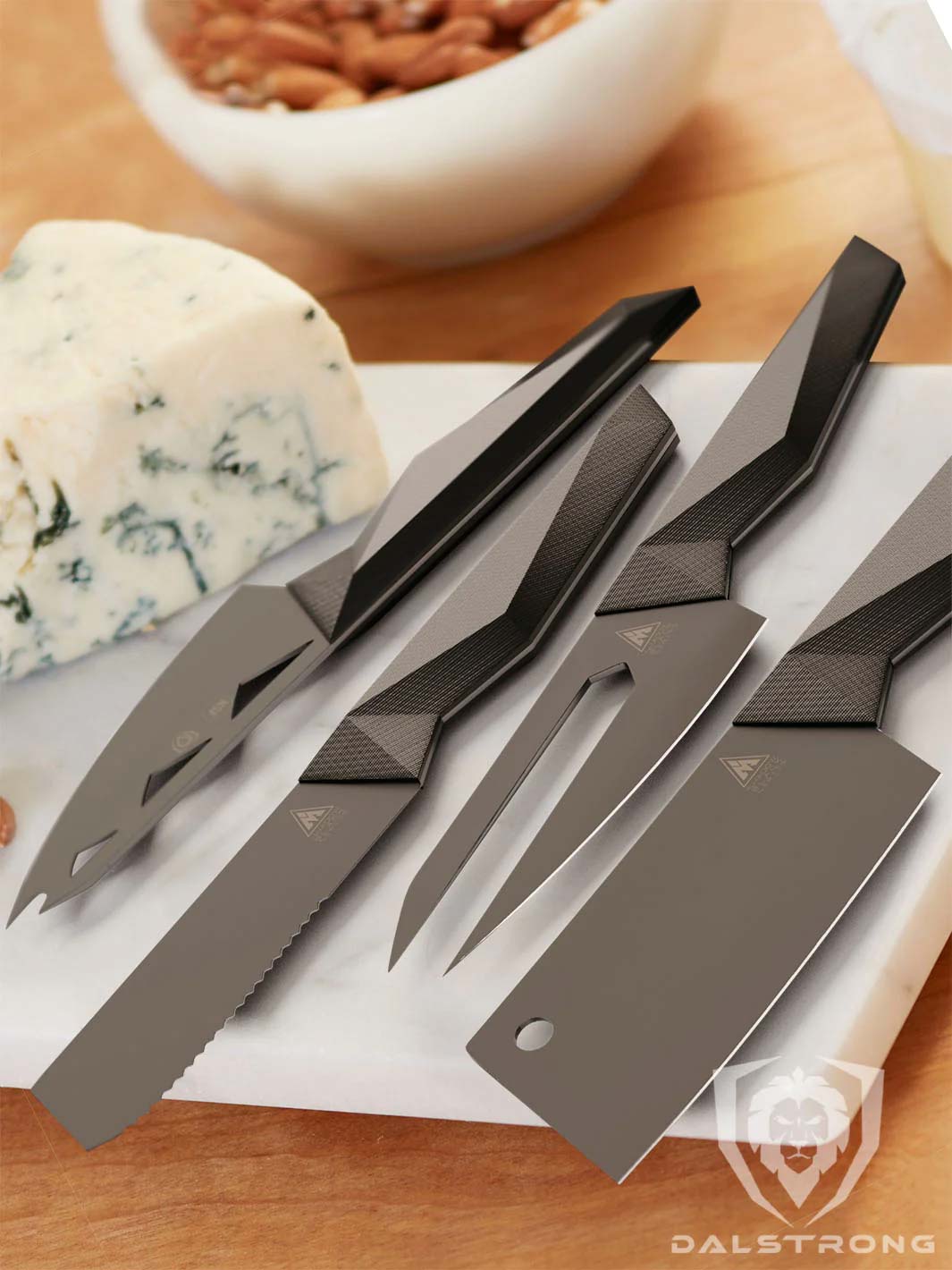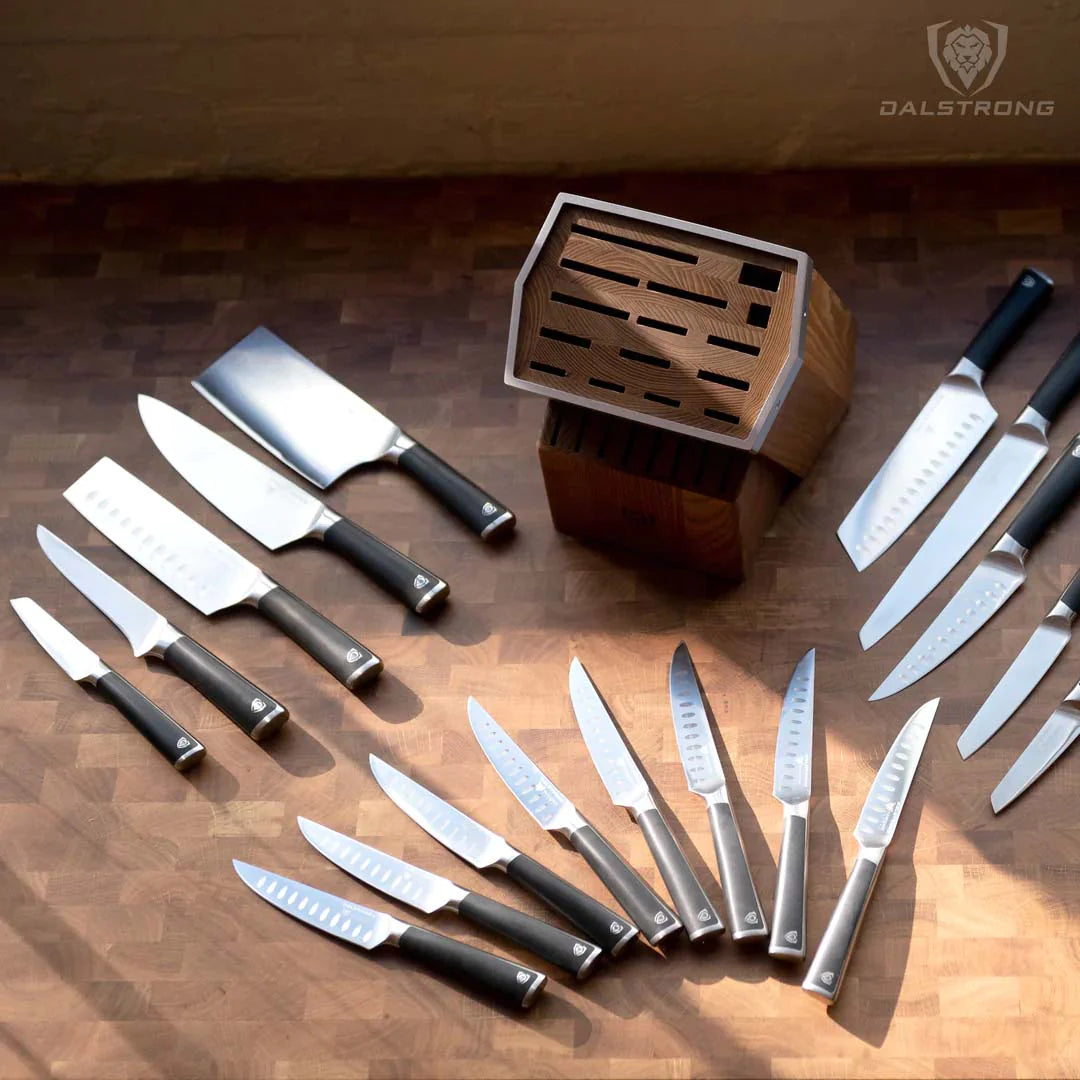What Is The Best Cutting Board Material?
For as long as knives have existed, we have needed a surface to use them safely and efficiently. That's why cutting boards and butcher blocks have always been indispensable in the culinary world. They are knives' best friends, offering an ideal surface to work on!
Read on to find out more about cutting boards and the different materials used to make them, so you can choose the perfect option for your culinary adventures!
1. Types Of Cutting Board Materials
 Lionswood Teak Cutting Board Medium Size Dalstrong
Lionswood Teak Cutting Board Medium Size Dalstrong
Today there is a wide variety of cutting boards to suit all tastes and needs. There are boards made of wood, bamboo, plastic, rubber and more. You can find them in diverse shapes, colors, sizes and prices for all styles and budgets.
These are the most used materials in cutting boards, as well as their advantages and disadvantages, for you to determine which material suits you best.
Wood
As far as materials are concerned, wood has always been preferred for cutting boards. Wooden boards are fascinating, they have that natural beauty and rustic charm no other material can offer.
One of the main advantages of wood as a cutting board material is that it protects the knife edge, because its naturally porous surface absorbs cuts without wearing down the edge. Wooden cutting boards are also known for their durability. Quality wooden cutting boards contain self-repairing fibers that can withstand continuous cutting and chopping. If perfectly cared for, they can last for years and even be passed down from generation to generation. Wood is naturally antibacterial and 99.9% of the bacteria that thrive on a wooden cutting board are killed within minutes.
Another attractive aspect of wood is its sturdiness and feel. Wooden boards have “just the right feel” compared to other materials that may feel too hard or too soft. The weight of wooden boards also prevents them from slipping while you use them. However, they tend to be more expensive. High-quality wooden boards in particular can carry a higher price tag. On the other hand, regardless of the type of wood, cutting boards require more demanding and rigorous maintenance compared to other materials.
Types of wood used for cutting boards
Let's take a look at the most popular woods used for cutting boards.
- Maple wood: Maple is a popular choice because of its even grain and ability to withstand daily wear and tear. Maple cutting boards are durable and do not easily damage knives, making them a popular choice for constant use in the kitchen.
- Walnut wood: This medium-grained wood is stable and its dark tone adds a touch of elegance to the cutting boards.
- Beech Wood: Beech wood cutting board is a good choice but it is important to note that it requires frequent oiling and higher maintenance compared to other wood boards.
- Teak wood: Teak wood boards are recognized for their unique combination of durability and natural beauty. This golden-colored tropical wood is hard, very stable and coarse-grained.
 Lionswood Colossal Teak Cutting Board Dalstrong
Lionswood Colossal Teak Cutting Board Dalstrong
Plastic
Food-grade plastic cutting boards are widely used in the kitchen. Among other reasons, because they are low-cost. By being thinner and lighter than most wooden boards, they are also convenient in some cases.
However, there are some disadvantages associated with a plastic board. One is their limited durability, since they tend to suffer from scratches and cuts, becoming a haven for bacteria, germs and microbes. Plastic boards do not offer the same self-repairing ability as wooden boards, so they may require more frequent replacement.
Rubber
Rubber cutting boards have gained popularity because of the soft and flexible nature of the material, which helps preserve the cutting edge of knives and makes cutting tasks easier. The flexibility of rubber also makes it relatively easy to clean.
Rubber offers non-slip properties and is a hygienic option due to its natural antibacterial properties, which can slow down the growth of bacteria on the surface and reduce the possibility of cross-contamination during food handling.
However, rubber cutting boards may not be as durable as wood or bamboo. Over time, the rubber surface can develop deep cuts and grooves. They also tend to retain stains and odors from strongly flavored foods such as onions or garlic.
Bamboo
Bamboo is an environmentally friendly choice due to its renewability and sustainability. Bamboo is also hygienic because of its natural bacteria-resistant and antimicrobial properties.
However, if preserving the sharpness of your knives is a priority for you, we don’t recommend that you use bamboo boards. Bamboo is harder and less porous than wood, which can damage the cutting edge of knives.
Rarely Used Materials
There are other, less common cutting boards made from materials like:
- Resin
- Glass
- Granite
- Marble
- Recycled paper
- Cork
2. Comparison Of The Different Cutting Board Materials
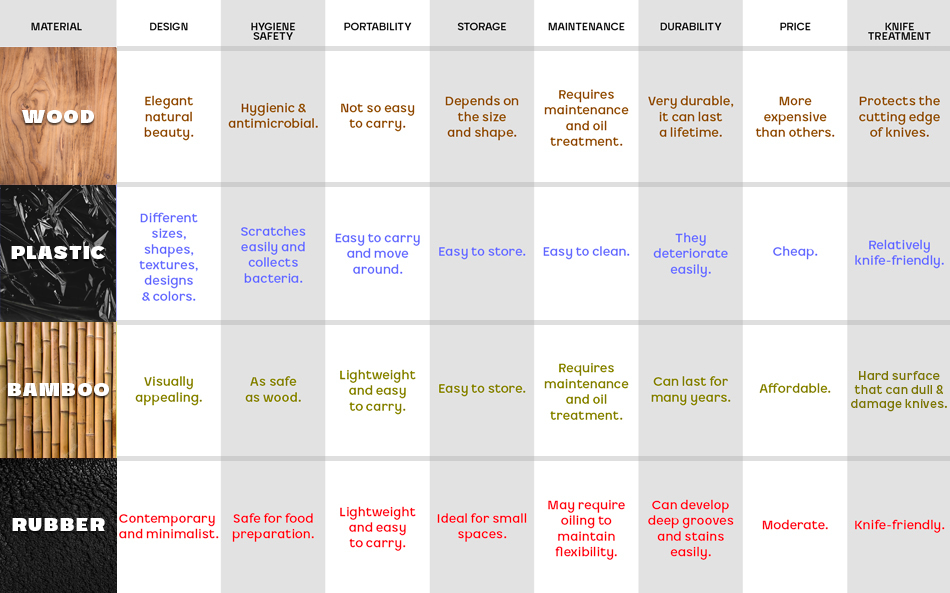
3. Why Is Teak Wood The Best Material For Cutting Boards?
 Corner Cutting Board Natural Teak Wood Dalstrong
Corner Cutting Board Natural Teak Wood Dalstrong
To answer this question, we should first establish that wood is the best choice for cutting boards for all the advantages explained before:
Wood offers exceptional strength and durability against heavy, daily use, no matter how busy the kitchen is. The natural oils in wood will make the cutting board naturally resistant to humidity, stains and bacteria.
Wooden cutting boards won’t scratch easily, because the surface has a self-healing ability that no other material can offer. Incidentally, your knives will stay sharp for longer if you use wooden cutting boards.
Last but not least, wood is beautiful. Who wouldn’t want a warm, elegant wooden cutting board on their countertop?
Now, among the different types of woods available for cutting boards, teak wood is our favorite. Why? Besides sharing all of the advantages mentioned above, which are true for all wood boards, teak wood also offers the following benefits.
More natural oils than other woods
Teak wood has a high oil content to begin with, especially compared to other woods like walnut or maple. Natural oils make wood strong and durable.
The right amount of hardness
The high density of wood provides the stability and strength we want in our cutting boards. With a Janka hardness slightly higher than walnut and slightly lower than maple; it is more resistant to external factors, while still being friendly to knives.
Smoother for longer
Thanks to the combination of the two characteristics above, density plus natural oils, teak surfaces will self-heal all minor cuts and scratches.
Teak wood is highly resistant to moisture
That’s right, teak wood is less prone to crack, warp or absorb water compared to other wood species. Since kitchens tend to foster moisture, this is a great benefit to have.
Less maintenance
Compared to walnut or maple, teak may require less frequent oiling or conditioning.
Teak wood smells nice
Teak has a characteristic, pleasant scent that will impregnate the kitchen with the smell of fresh nature.
Teak wood is beautiful
Teak features warm tones like golden, amber and brown in striking grain patterns that combine lines and knots. A teak cutting board can be an art piece in itself.
4. Proper Care And Maintenance Of Teak Cutting Boards
Yes, teak cutting boards are naturally strong and resistant, but you still need to take care of them! The maintenance program for a teak cutting board can basically be divided into 3 phases: cleaning, oiling and preventing.
CLEANING
- Wash, rinse and dry after every use. Apply light soap and warm water, do not use abrasive substances or materials like steel wool. This is the most important step and it takes a minute or two.
- If there are stubborn stains or food debris, rub a bit of salt or baking soda. Then rinse and dry.
- Every once in a while, plan a sanitization routine for your teak cutting board. You can use a food-grade hydrogen peroxide solution or prepare a solution at home with water and vinegar.
OILING
- When it comes to wooden boards, periodic oiling is essential. You should commit to doing oil treatment every few months, and we recommend you consider this commitment before you purchase a high-quality teak wood board.
- Use food-grade mineral oil, beeswax, or a blend specifically designed for cutting boards.
- After cleaning, apply a generous amount of oil with a cloth or paper towel. Cover all the surface and let it rest overnight. The wood needs several hours to absorb the oil.
- The next morning, clean the excess oil and let it air-dry for a couple of more hours.
- Simple trick to know when it’s time to oil again: sprinkle a few drops of water on the board. If the drops build up to small beads, it’s not time. If the water does not build into small beads… then it’s time to oil again.
PREVENTING
- Make sure the teak board is completely dry before storing it.
- To prevent warping, store in an upright position and never place other objects on top.
- Keep the board away from sunlight.
- Avoid contact with direct heat from stove tops or ovens.
- Avoid the dishwasher.
- Be extra careful when using serrated knives.
5. Recommended Dalstrong Teak Cutting Boards
1. Corner Cutting Board | Natural Teak Wood
The smart design of this cutting board saves space and adds space to the kitchen at the same time. It fits very easily in any corner of the countertop and offers a firm and secure base. It is made from 100% sustainably sourced tropical teak wood which makes it very sturdy as well as beautiful.
PROS:
- Ingenious "corner block" design that slides easily and fits securely into the corner of your countertop.
- Non-slip surface that absorbs shock and protects the knife edge.
- Teak is durable and highly resistant to moisture.
- Hygienic and antibacterial properties.
- Caring for this board is relatively easy and worth it.
CONS:
- The shape of this cutting board requires an inner corner on the countertop to fit. If you don't have one in your kitchen, you may want to look at a more conventional model.
- This high-end piece requires a significant investment that may be too high for many.
2. Lionswood Teak Cutting Board Medium Size
This is a classic yet sophisticated multi-functional cutting board made from sustainably sourced tropical teak wood. It is built with satin steel handles, so it can serve as a prep station, cutting surface, and also as serving board.
PROS:
- Perfectly sized to work comfortably while still being easy to store.
- The end-grain, checkered construction prevents the wood from warping or bending.
- Filled with the natural oils of teak wood.
- Knives stay sharper for longer.
- Easily cleaned.
- A curved cut-out at the bottom is used to insert a side plate.
CONS:
- Some cooks may prefer a larger board like the XL Lionswood Colossal.
3. Lionswood Colossal Teak Cutting Board
A luxurious, oversized teak board that is practically a cooking station in its own right. It can even serve perfectly as a butcher block when needed, or as your food prep space, serving tray or elegant cheese board, while still being your favorite cutting board.
PROS:
- Generous size to work comfortably and work on different ingredients.
- It has two compatible steel handles on both sides for serving, carrying and presenting everything from meats to bread and cheese or fruit.
- Fine-grained wood and checkerboard construction ensures a non-slip surface that absorbs impact and protects the blade and cutting edge of your knives.
- Teak wood is very hygienic and resistant to water, bacteria and stains.
- Naturally beautiful, adding a touch of style and elegance to your kitchen.
CONS:
- Its large dimensions don't exactly make it lightweight. Keep this in mind if you need a more portable board.
- You need a good amount of storage space to store this colossal board. If your kitchen is too small, you may want to look at other options.
4. Teak Cutting Board Large Size Horizontal Grain
This practical, elegant, 100% natural teak wood board is large enough to tackle all your daily cutting needs, even for larger preparations. It is both sturdy and efficient. And, because it is made of teak wood, there’s a chance it will outlive you!
PROS:
- Slightly larger than a traditional cutting board.
- Hard enough to ensure clean and precise cuts on one hand, and on the other hand, it is soft enough to protect the sharpness of the knives.
- The compact grain structure ensures a hygienic cutting surface, especially suitable for professional kitchens.
- Includes laser-engraved measuring lines.
- Anti-spill groove to collect food juices and other liquids.
- Non-slip pieces hold the board securely to the countertop.
CONS:
- Some may simply prefer the look of checkered construction. If you are one of those, you may want to look at this Lionswood Cutting Board.
- Teak requires regular treatment with mineral oil. While this is not a complicated or time-consuming task, it is something to keep in mind.
5. Teak Cutting Board Medium Size
The surface pattern of this board is beautiful, it has the contrasts and tones of natural teak wood and all the advantages of end grain wood. Its medium size makes it a handy board and perfect for simple everyday cutting tasks and preparations that require chopping, mincing, dicing and slicing.
PROS:
- It is a compact and dense-grained cutting board that is tough and durable.
- Made from sustainably sourced natural teak wood.
- Ideal size for everyday kitchen tasks.
- Checkered construction with a non-slip surface.
- Laser-etched measuring lines that won't fade over time.
- Anti-spill juice groove along the edge.
CONS:
- Professional cooks, who work in professional kitchens, might prefer a larger cutting board for their large culinary preparations.
- It doesn't come with steel side handles.
6. Frequently Asked Questions About Cutting Boards
What's the difference between edge grain and end grain?
In wooden cutting boards, the terms “end grain” and “edge grain” refer to the orientation of the wood fibers. You can recognize end grain cutting boards because they show a checkerboard pattern. In edge grain surfaces, you see the long grain of the fibers.
Is a carving board the same as a cutting board?
They are similar but they serve different purposes. A carving board is designed for carving cooked meats. In some cases, if the cutting board is large enough and offers features like juice grooves, it can serve as a carving board.
Are plastic cutting boards dishwasher safe?
Most plastic cutting boards are dishwasher-safe.
SHOP DALTRONG CUTTING BOARDS NOW!







































































































































































































